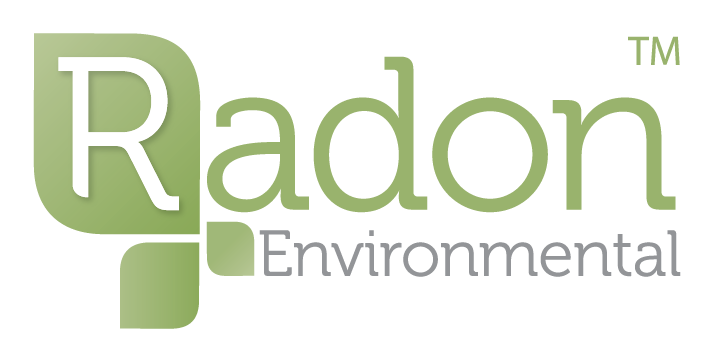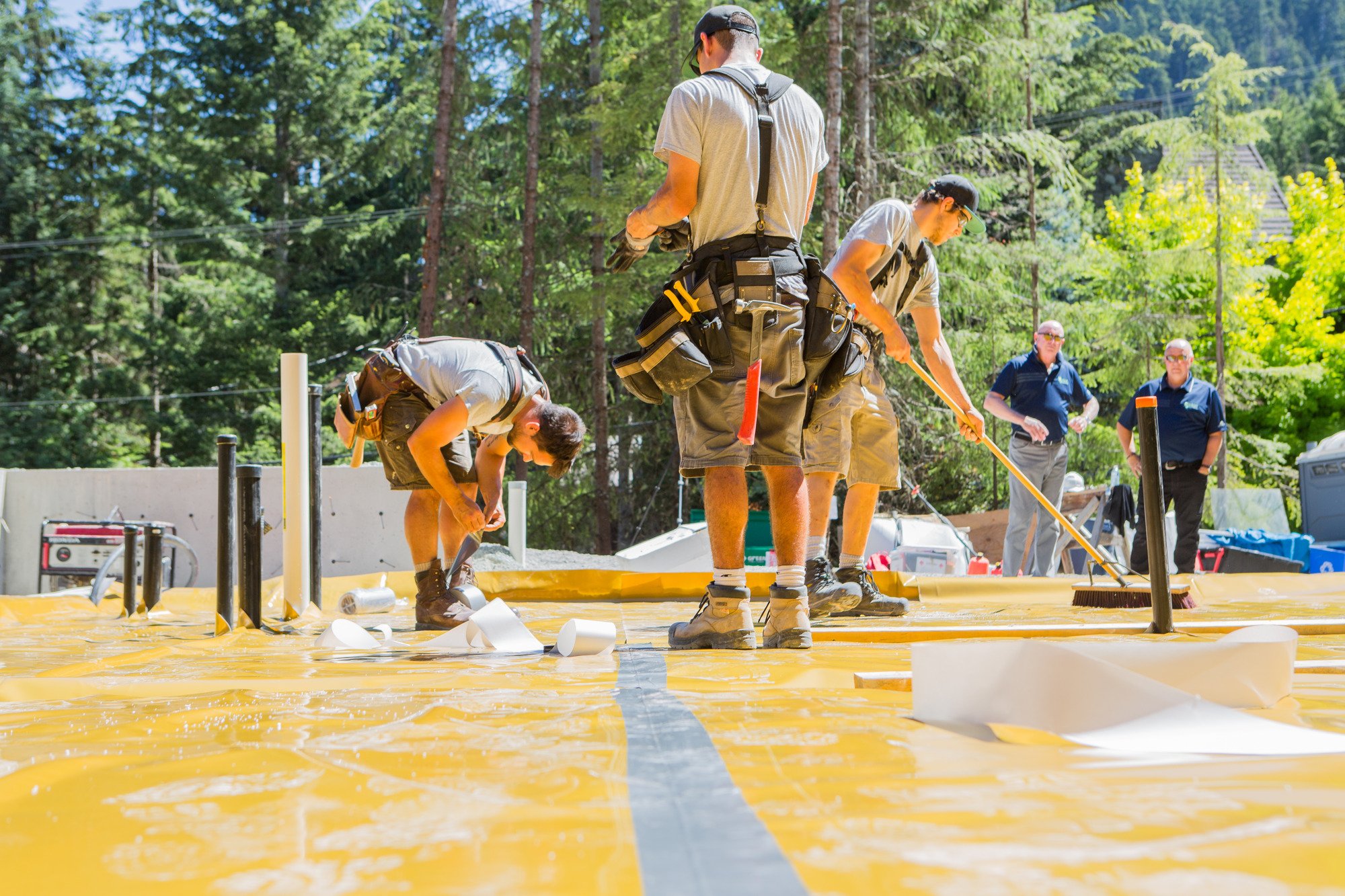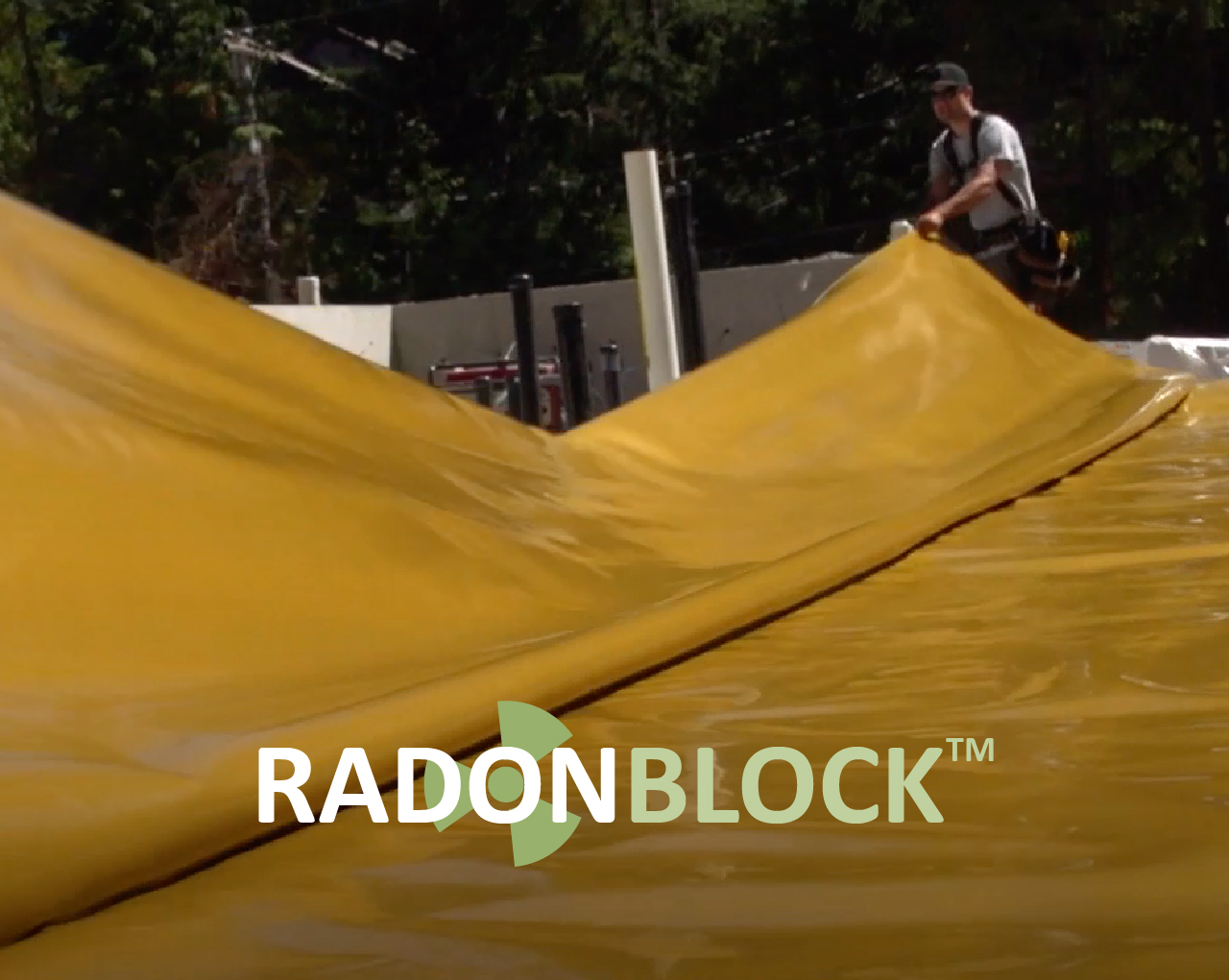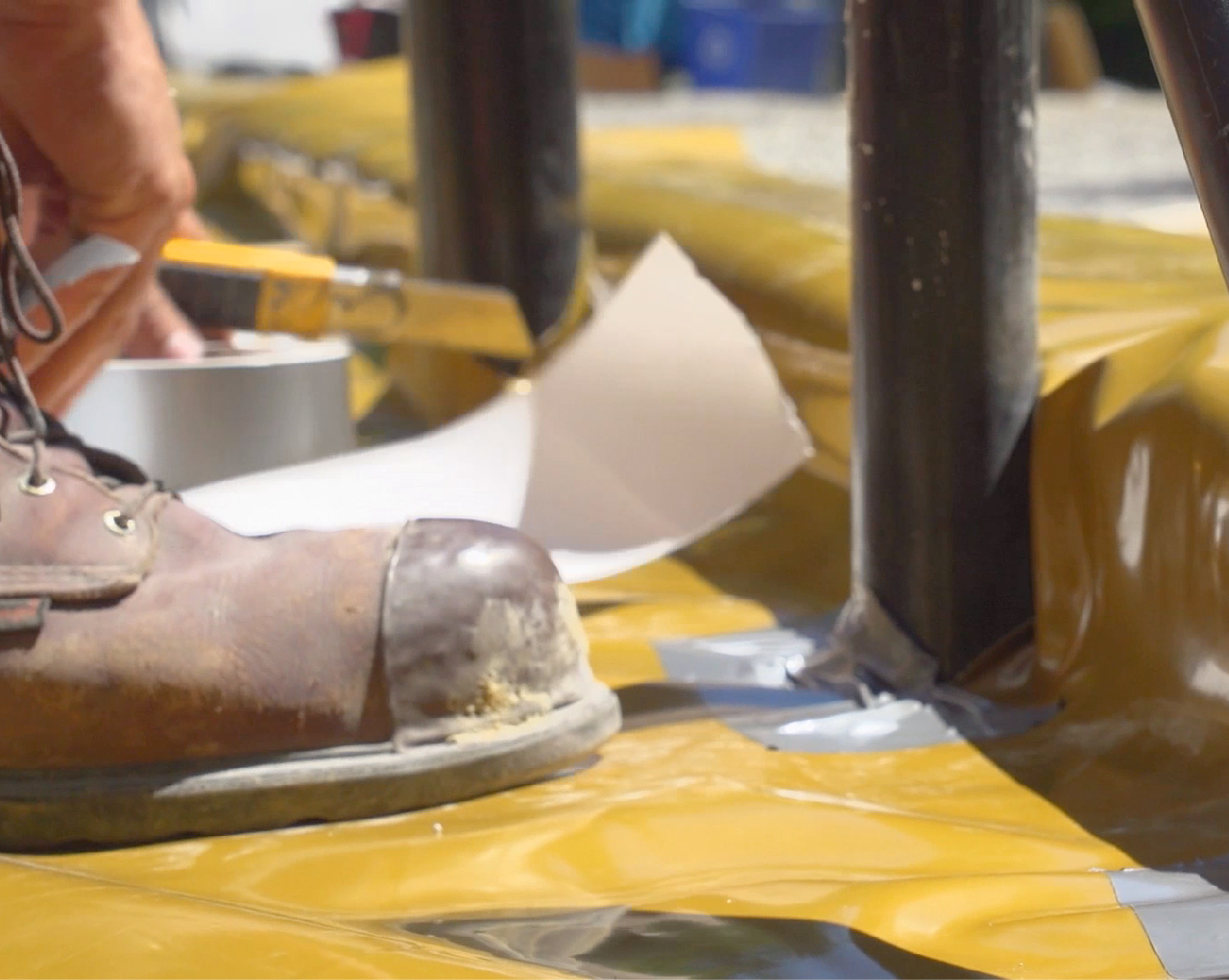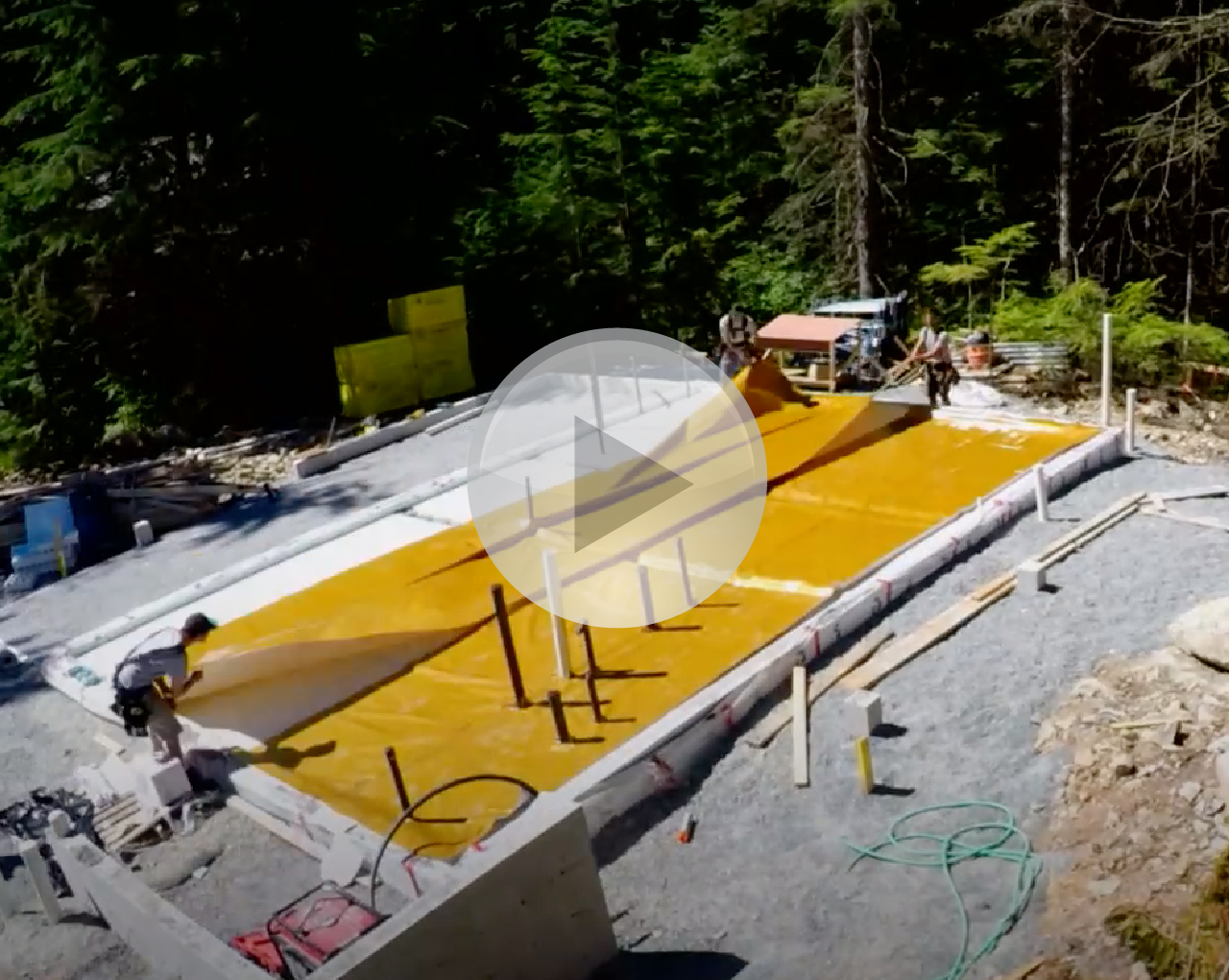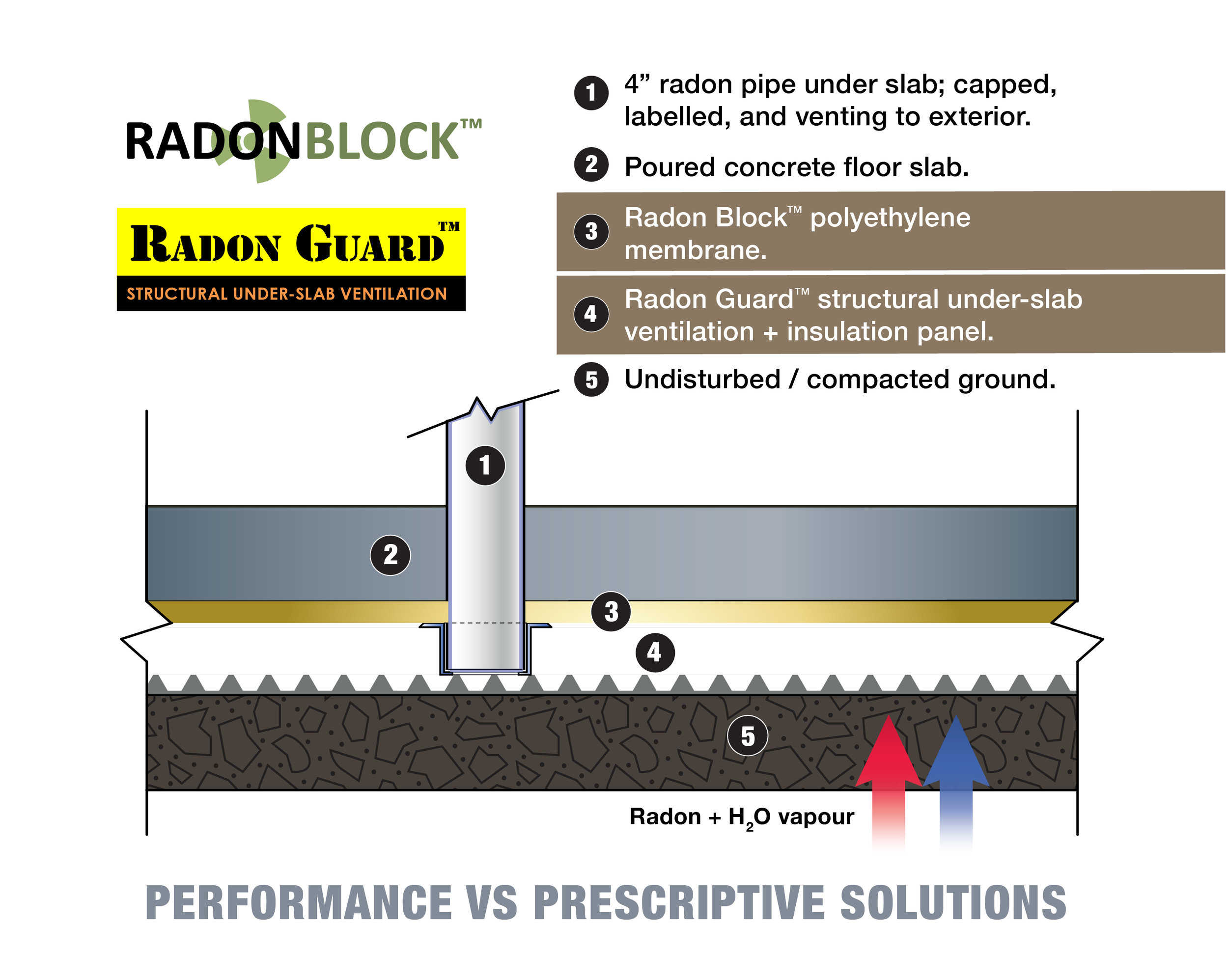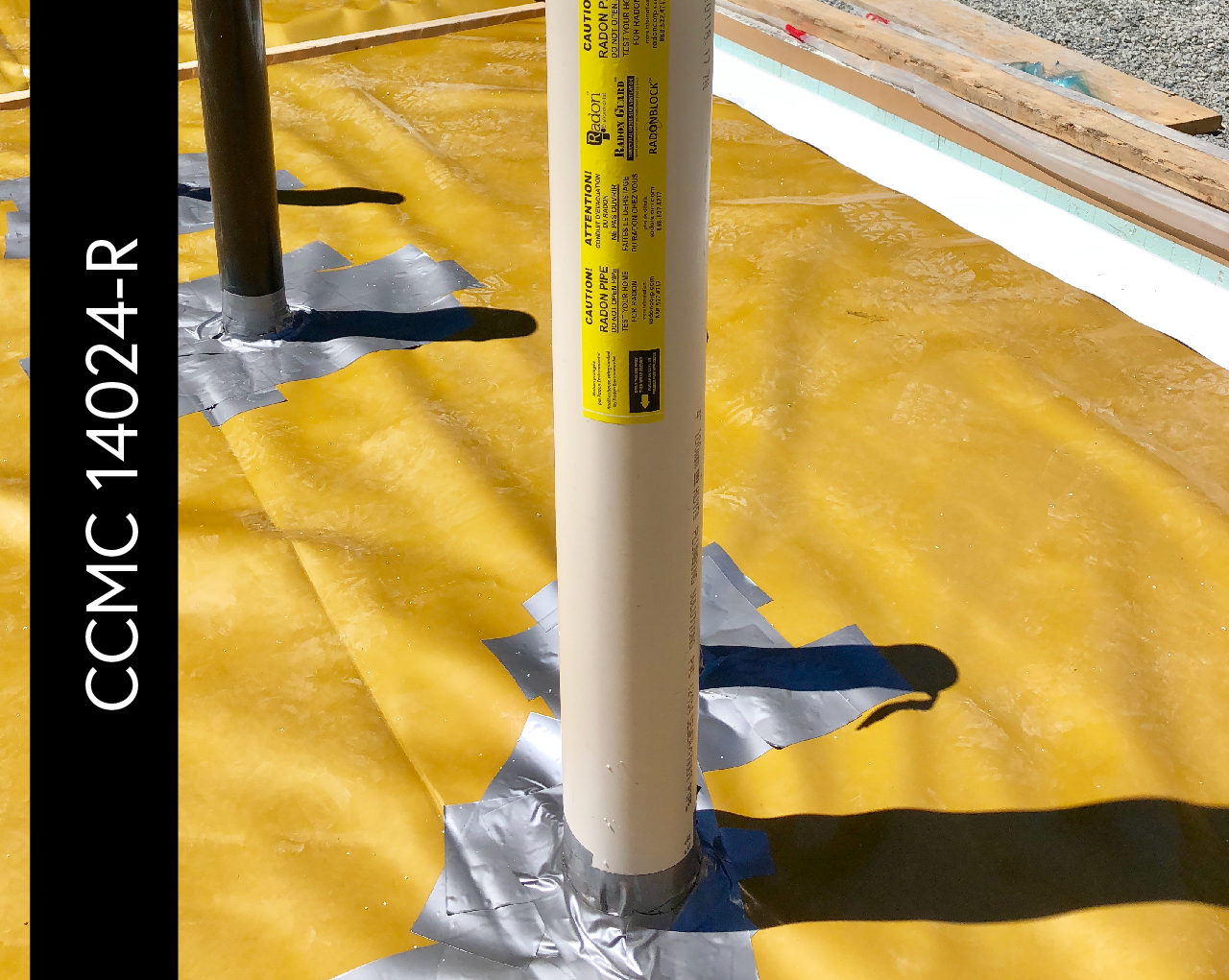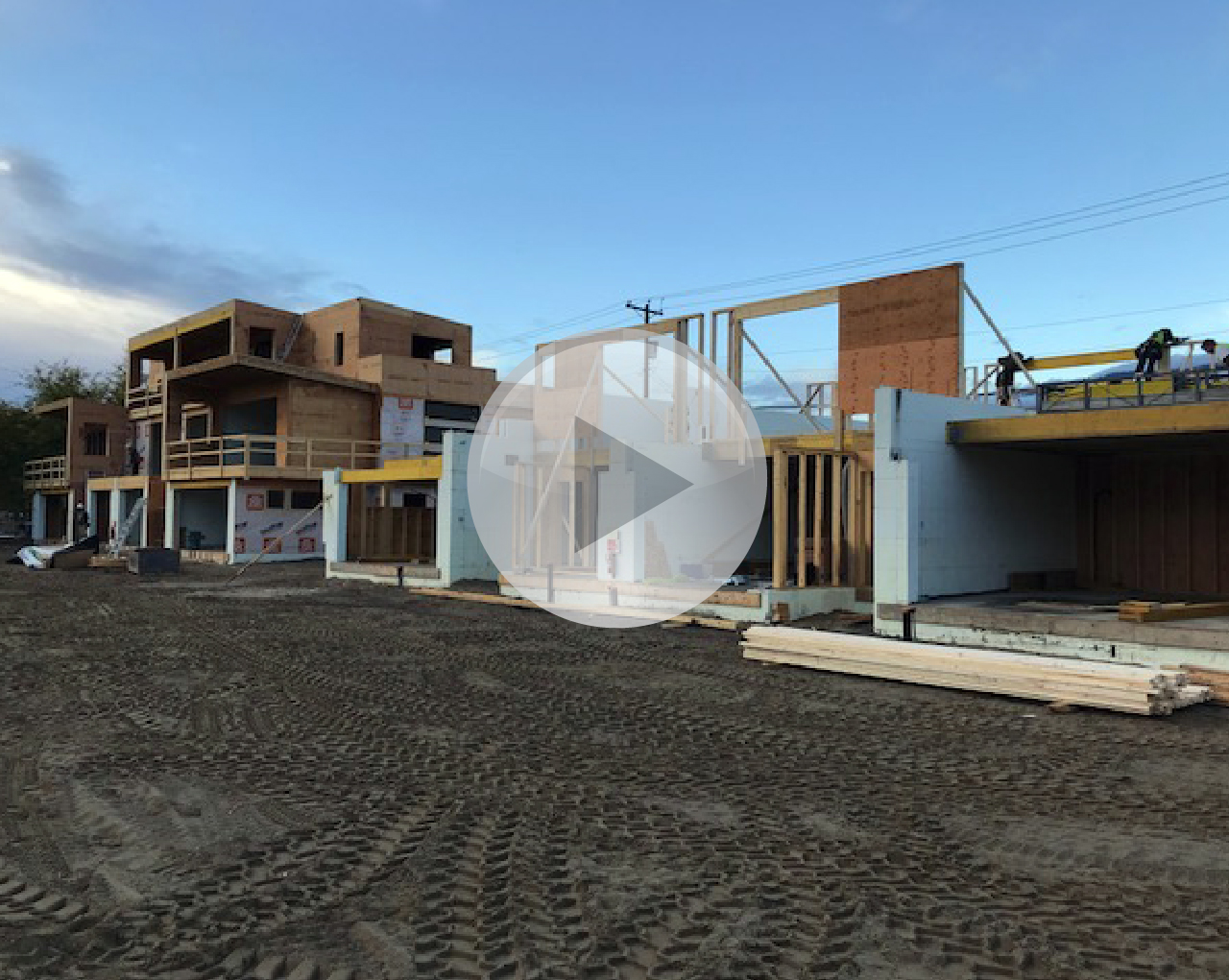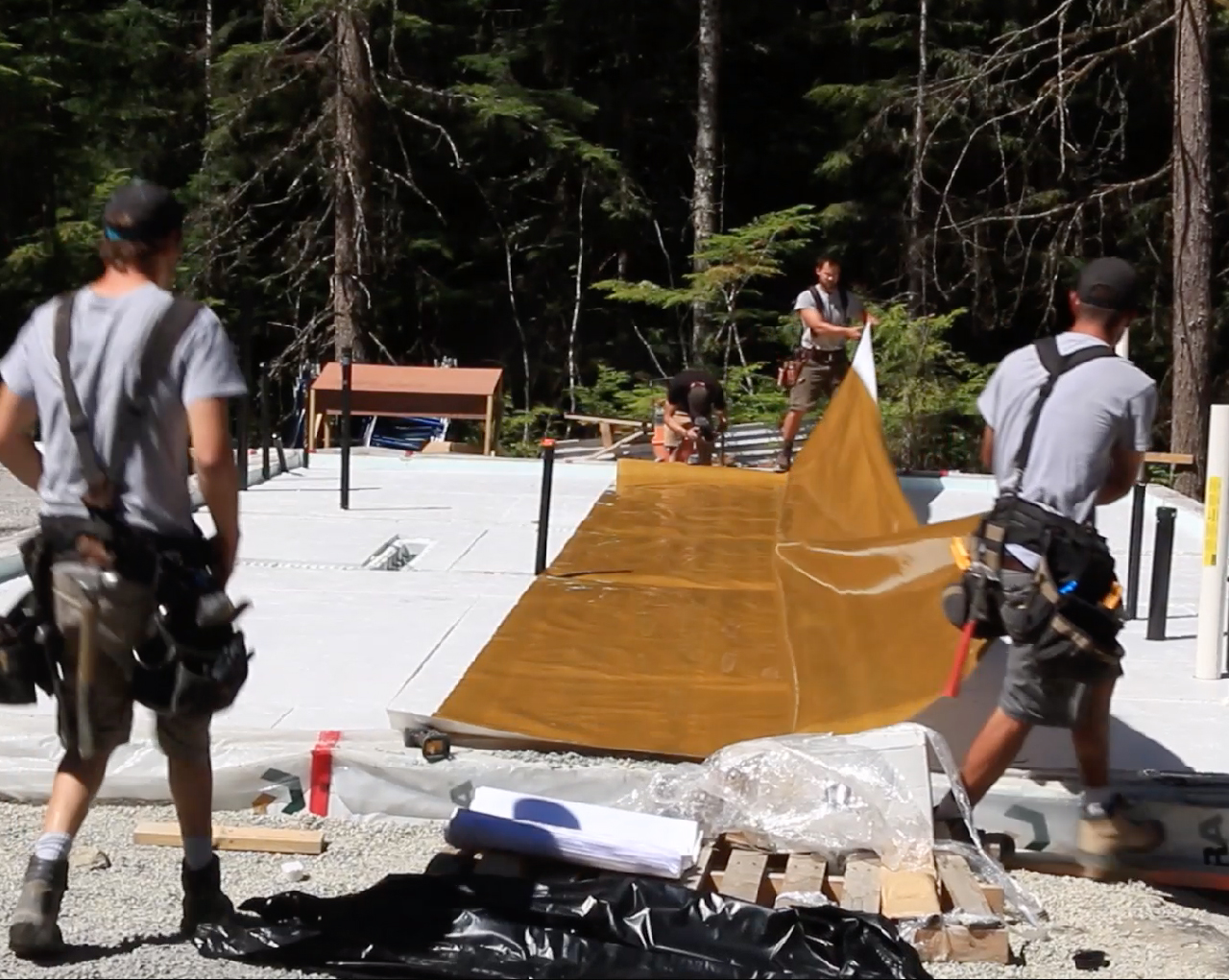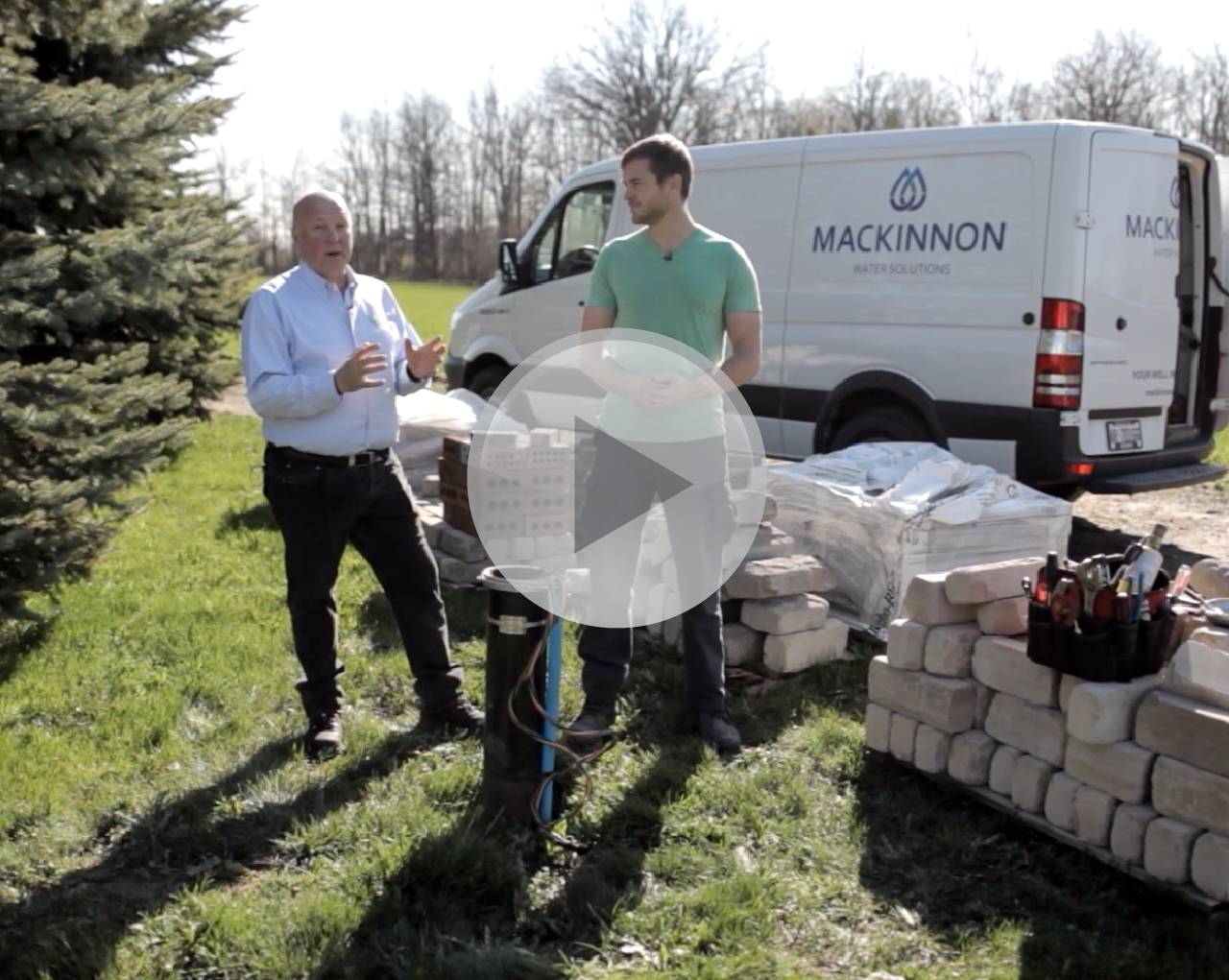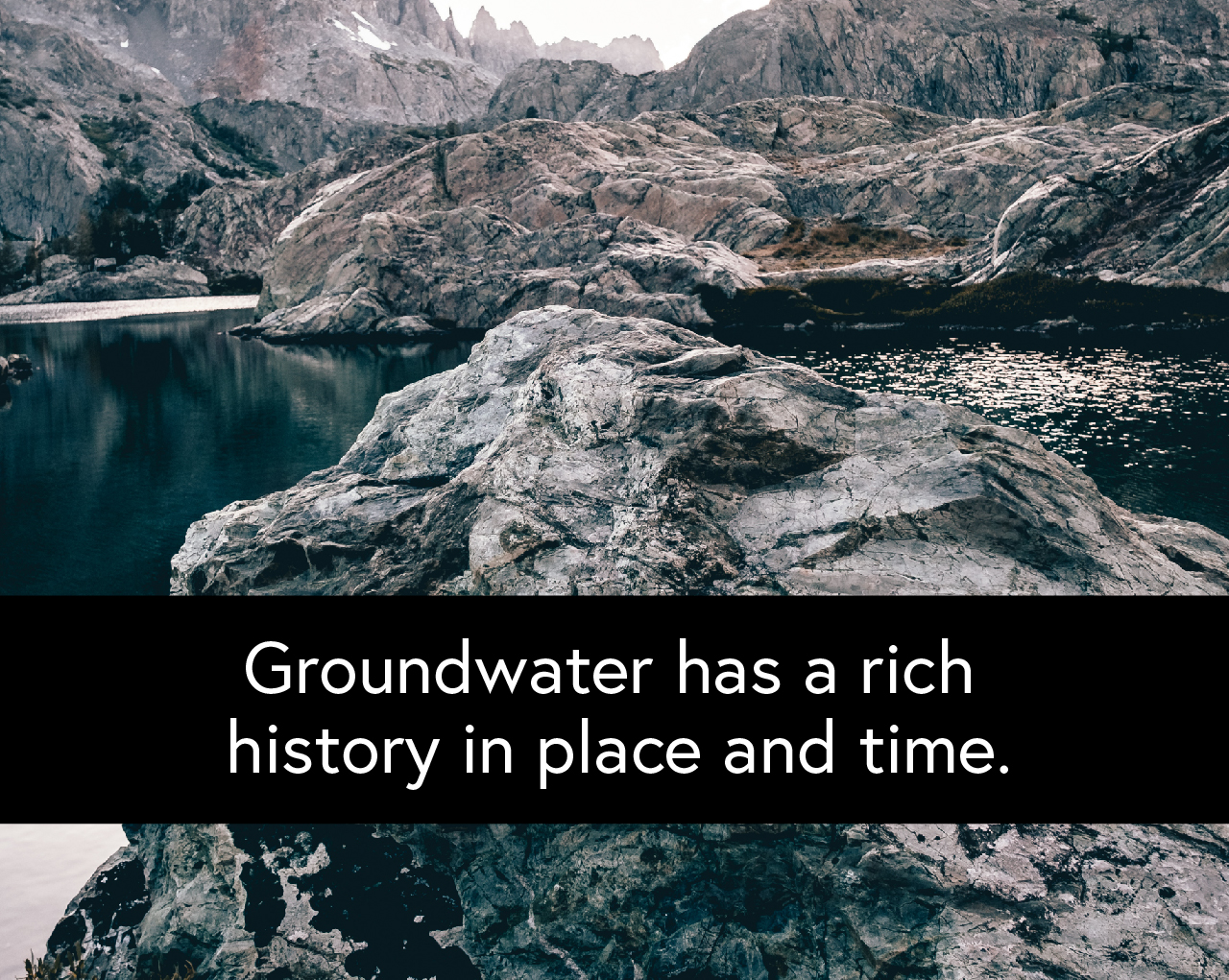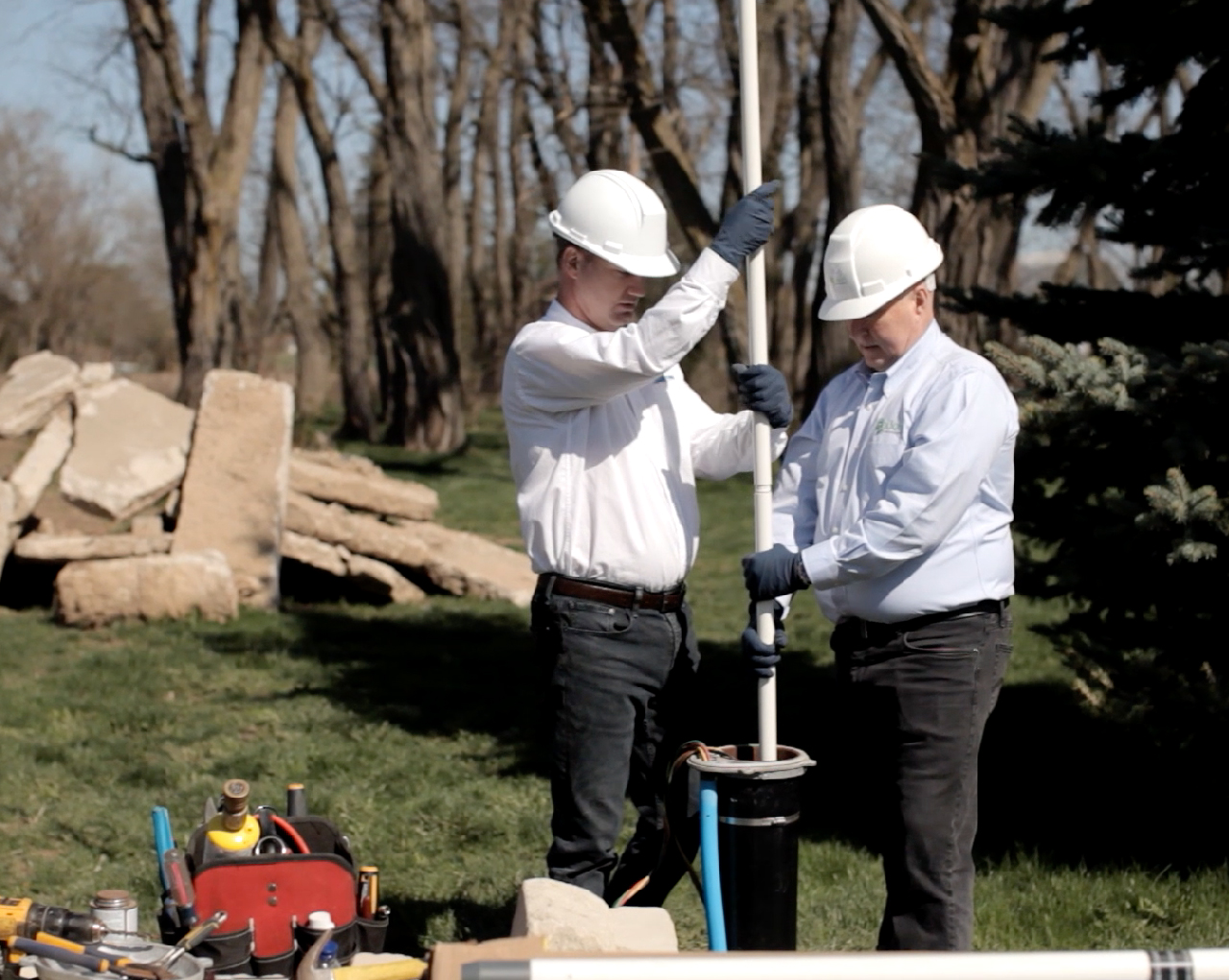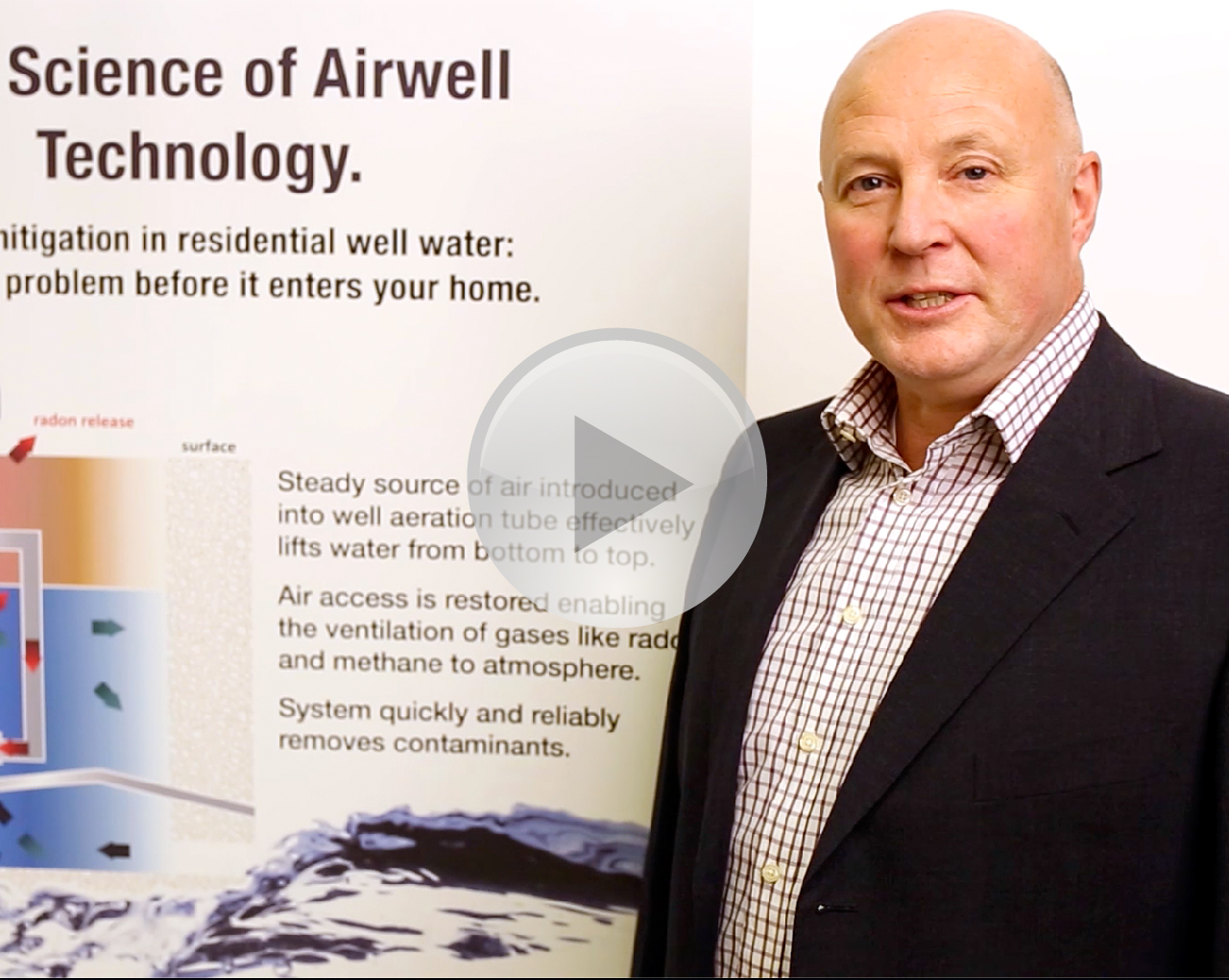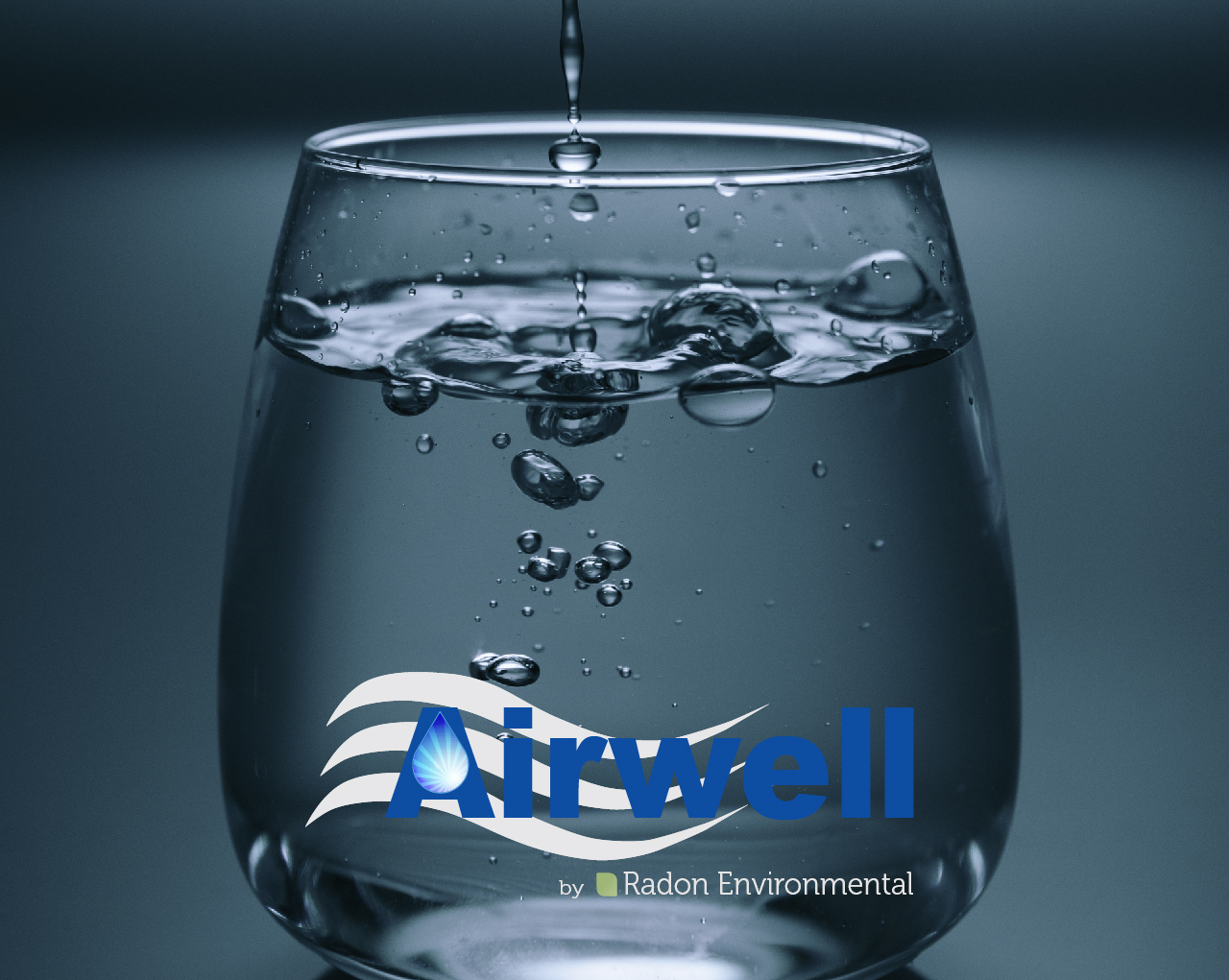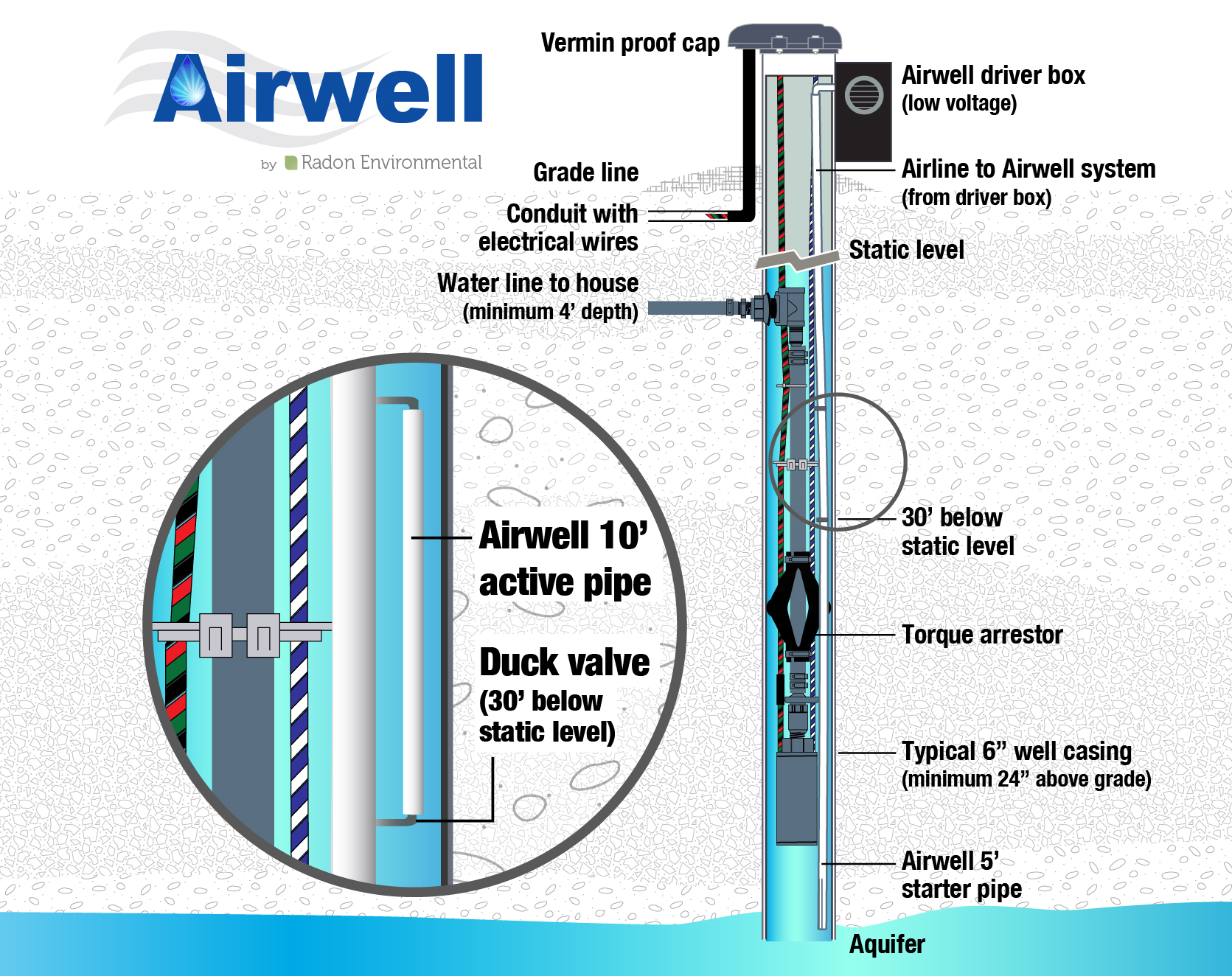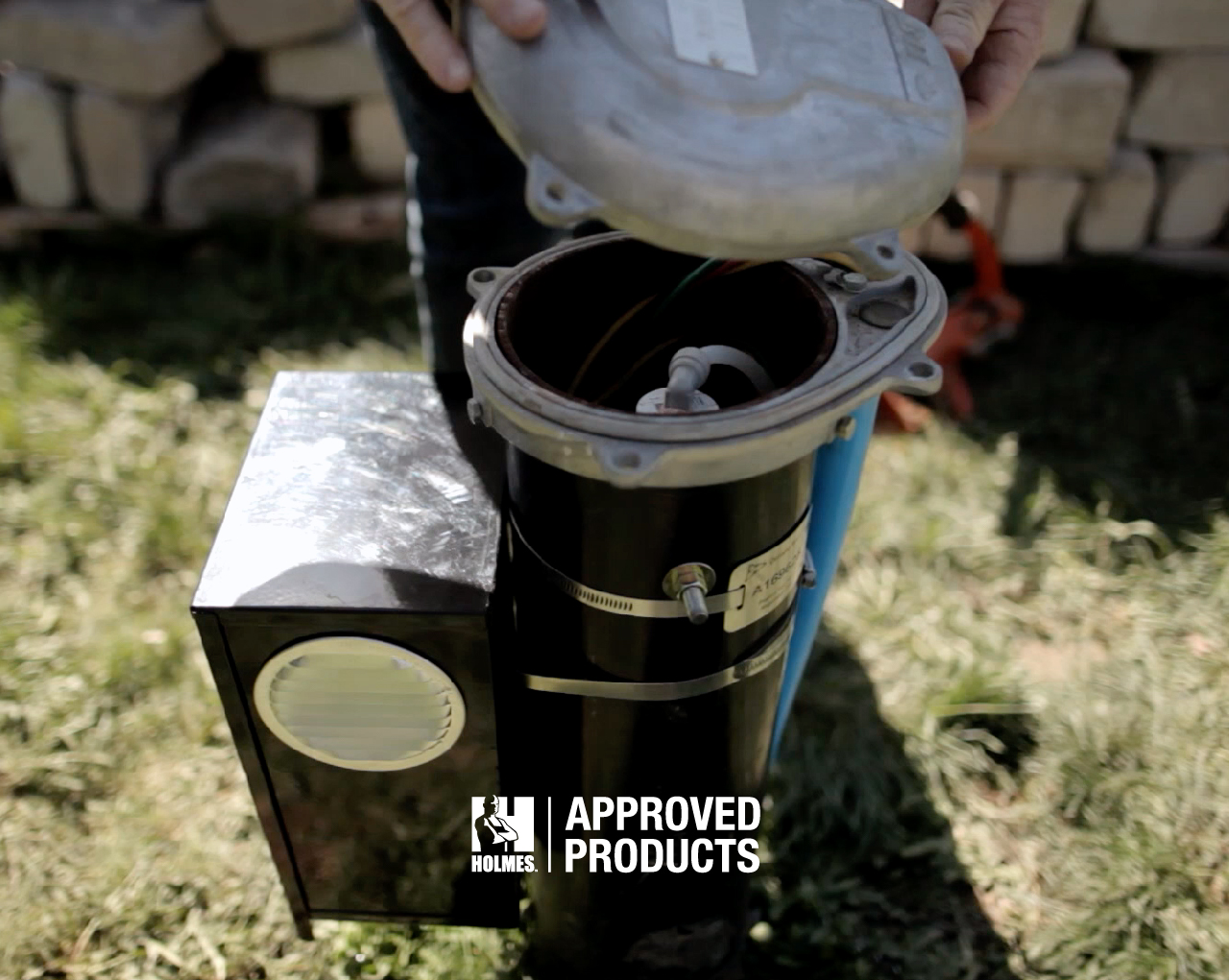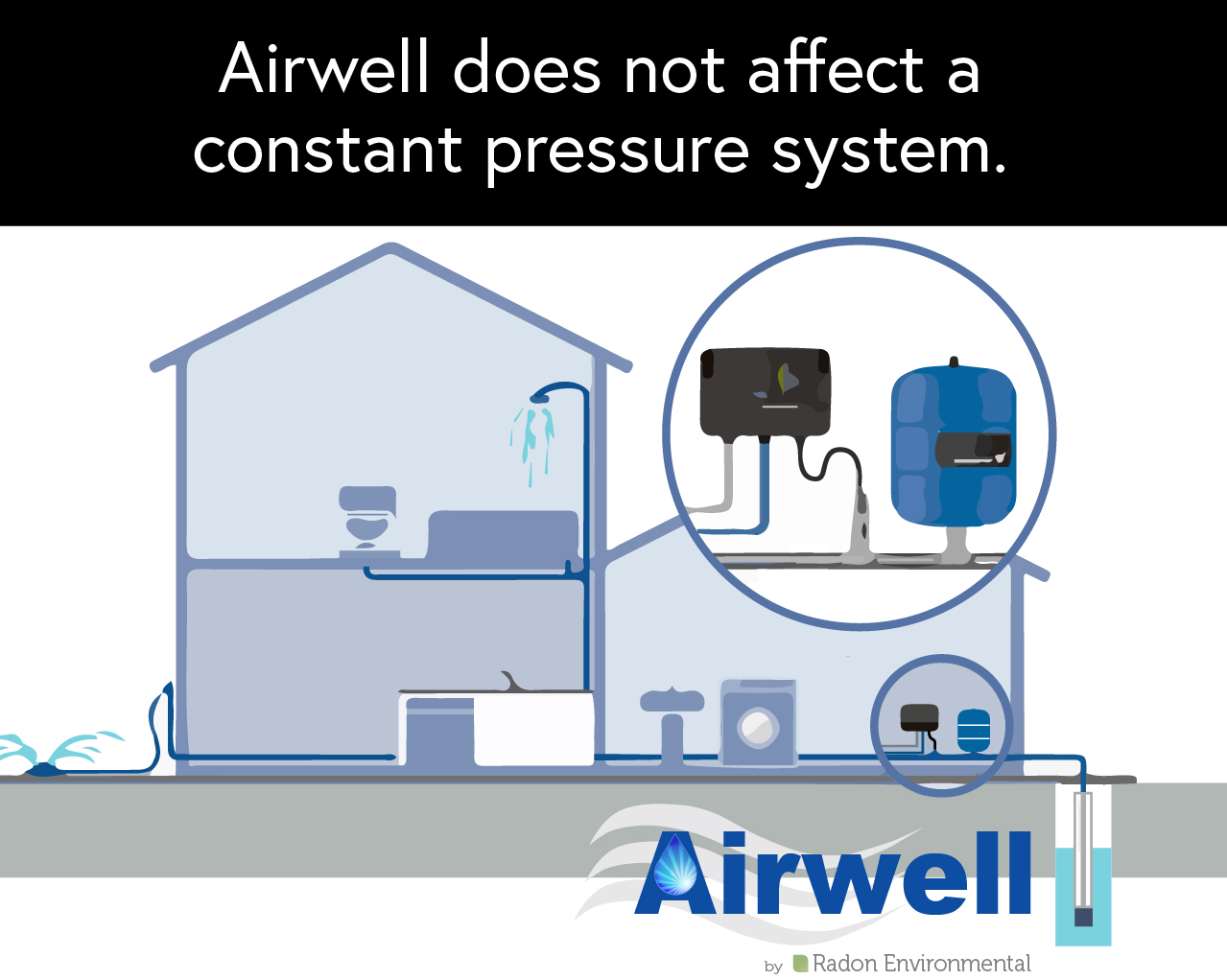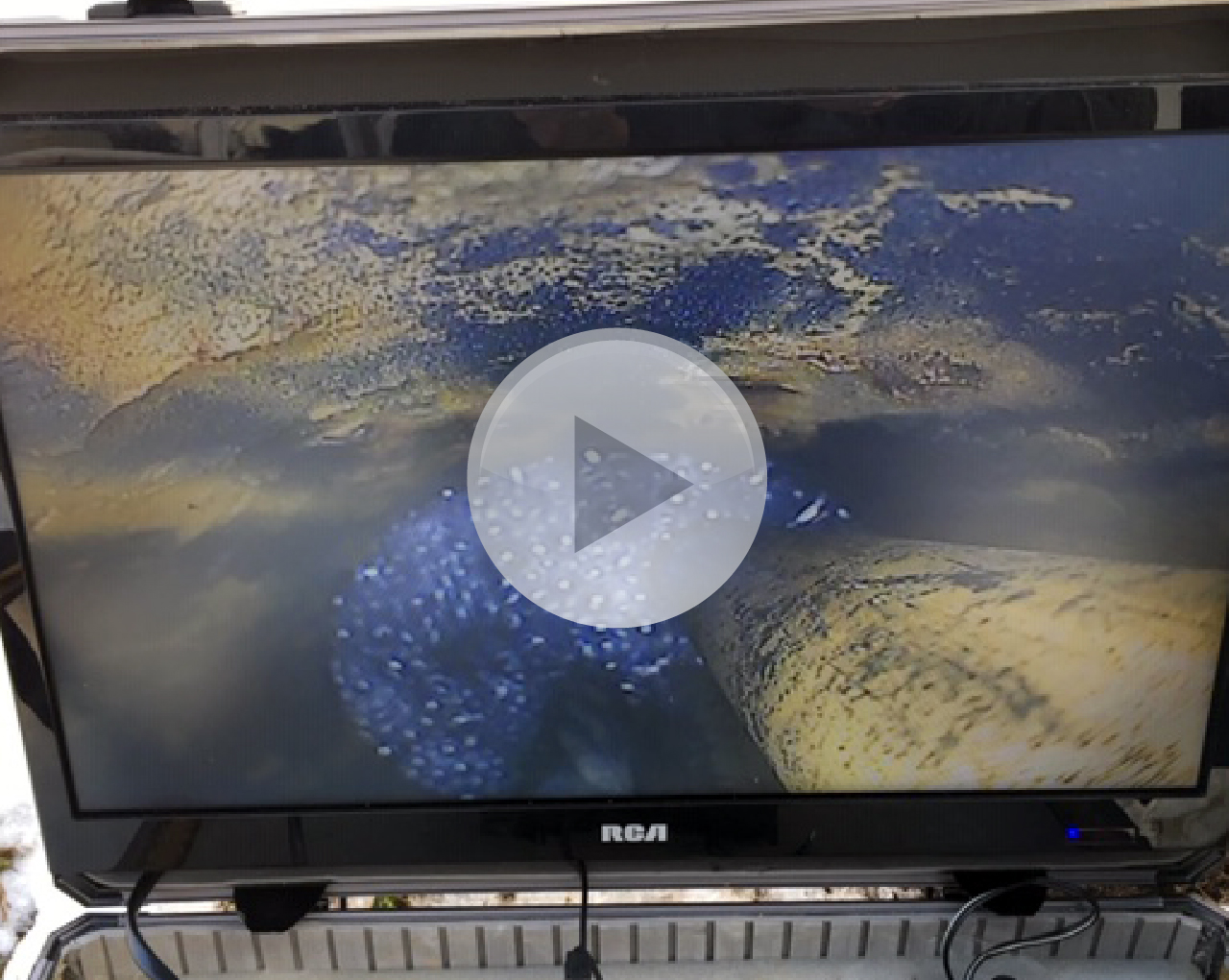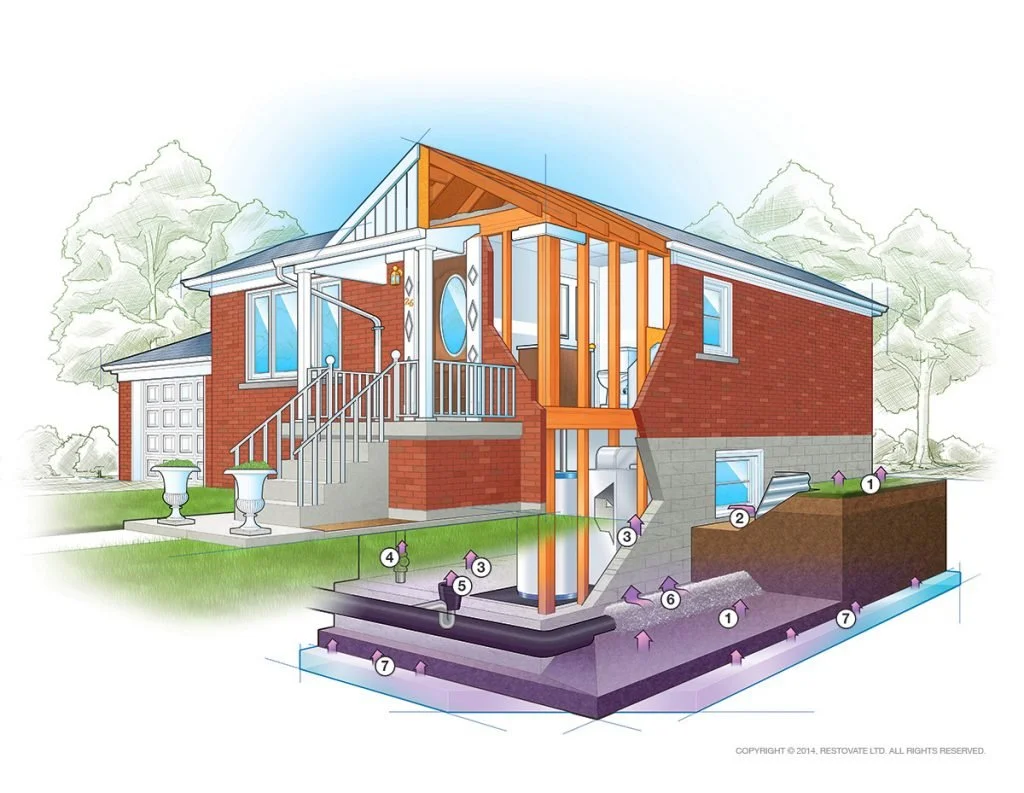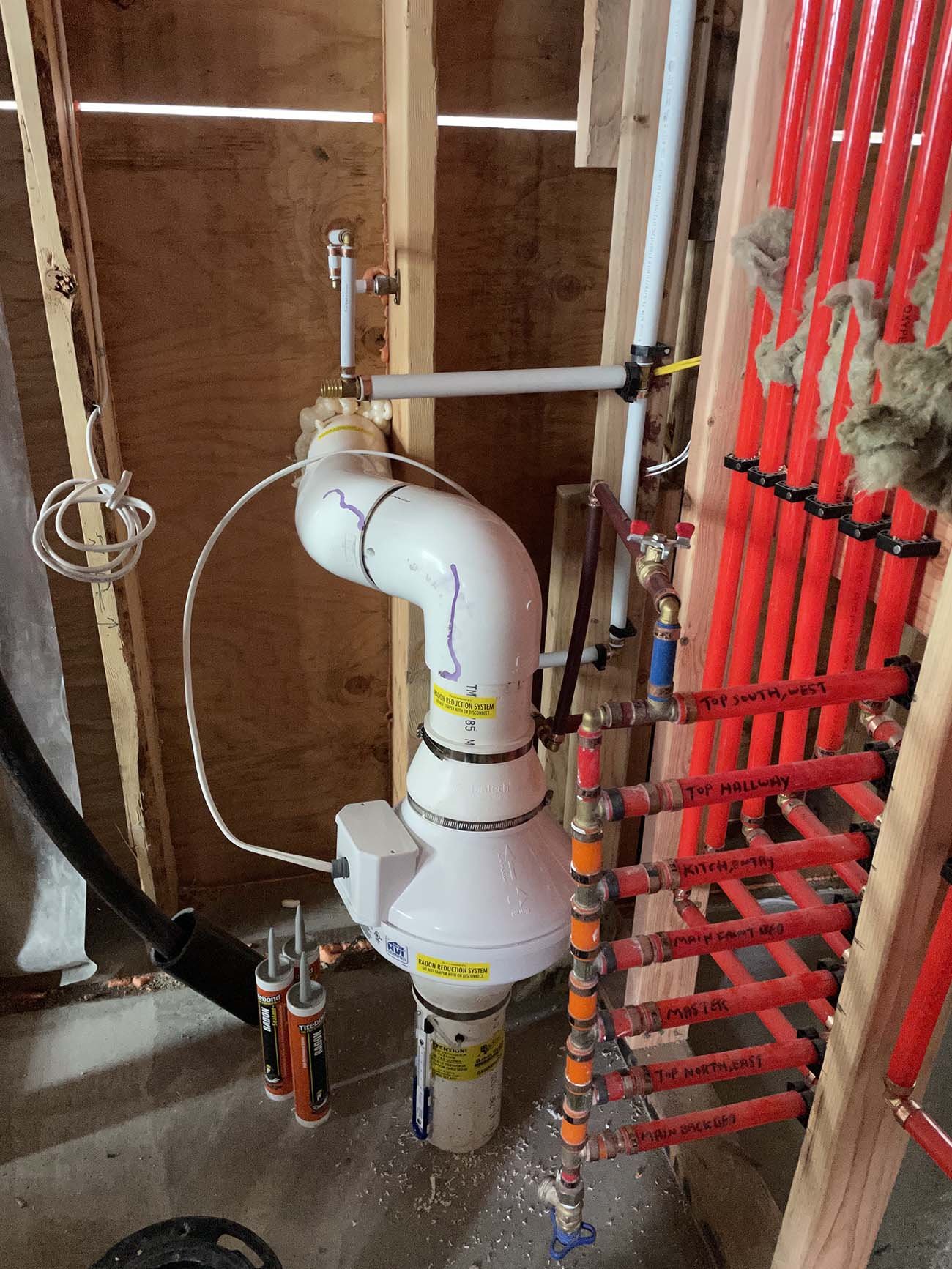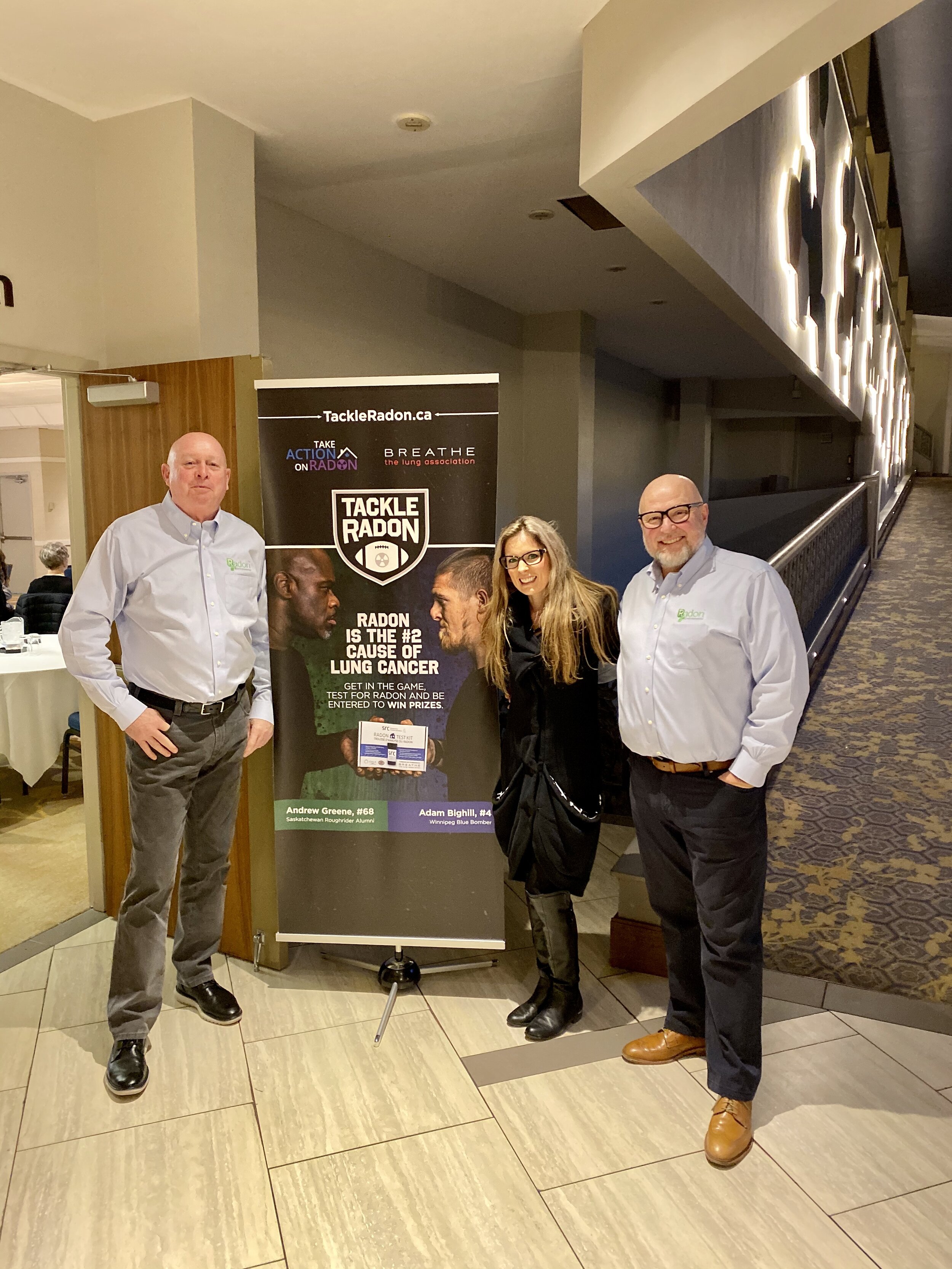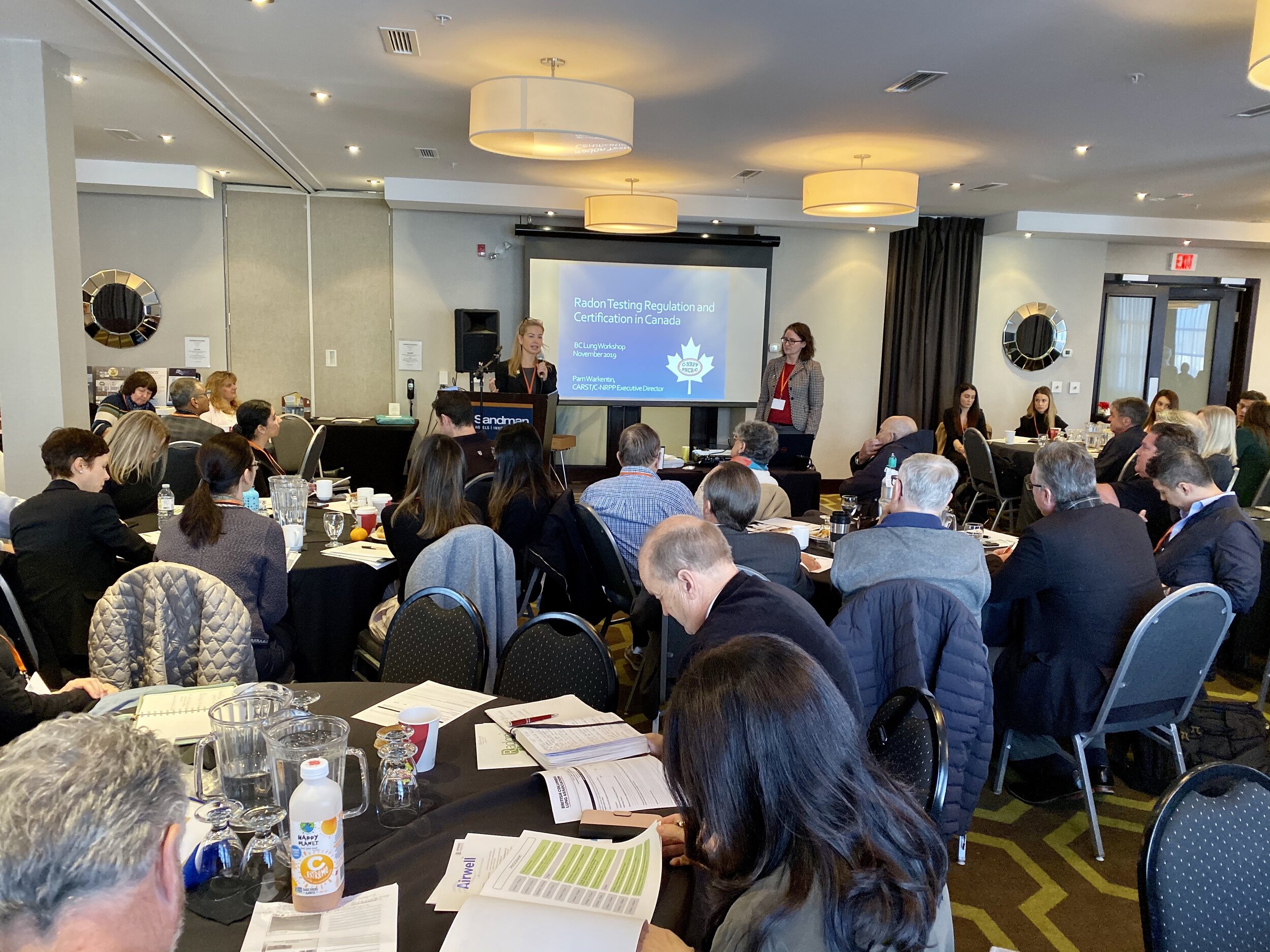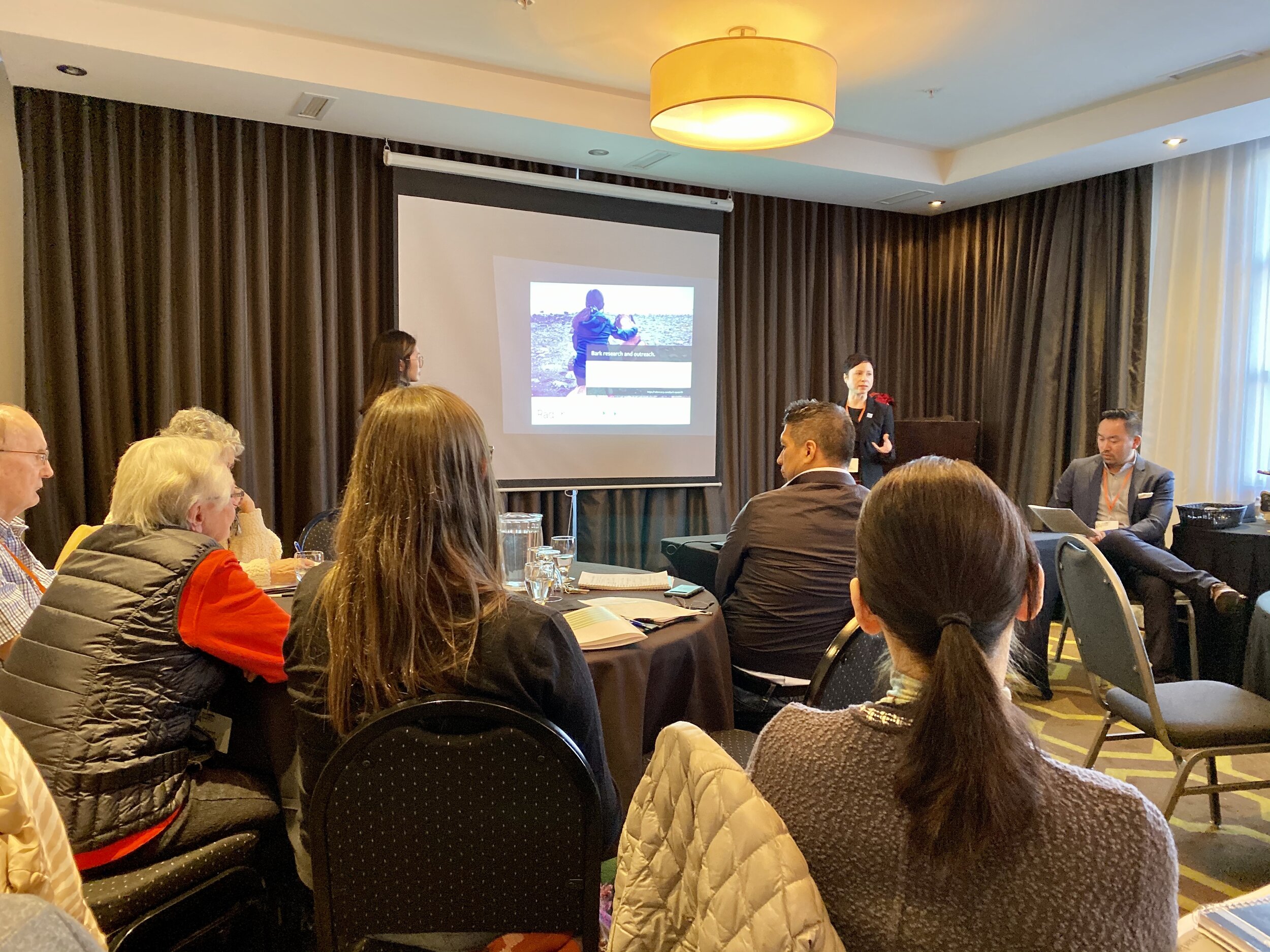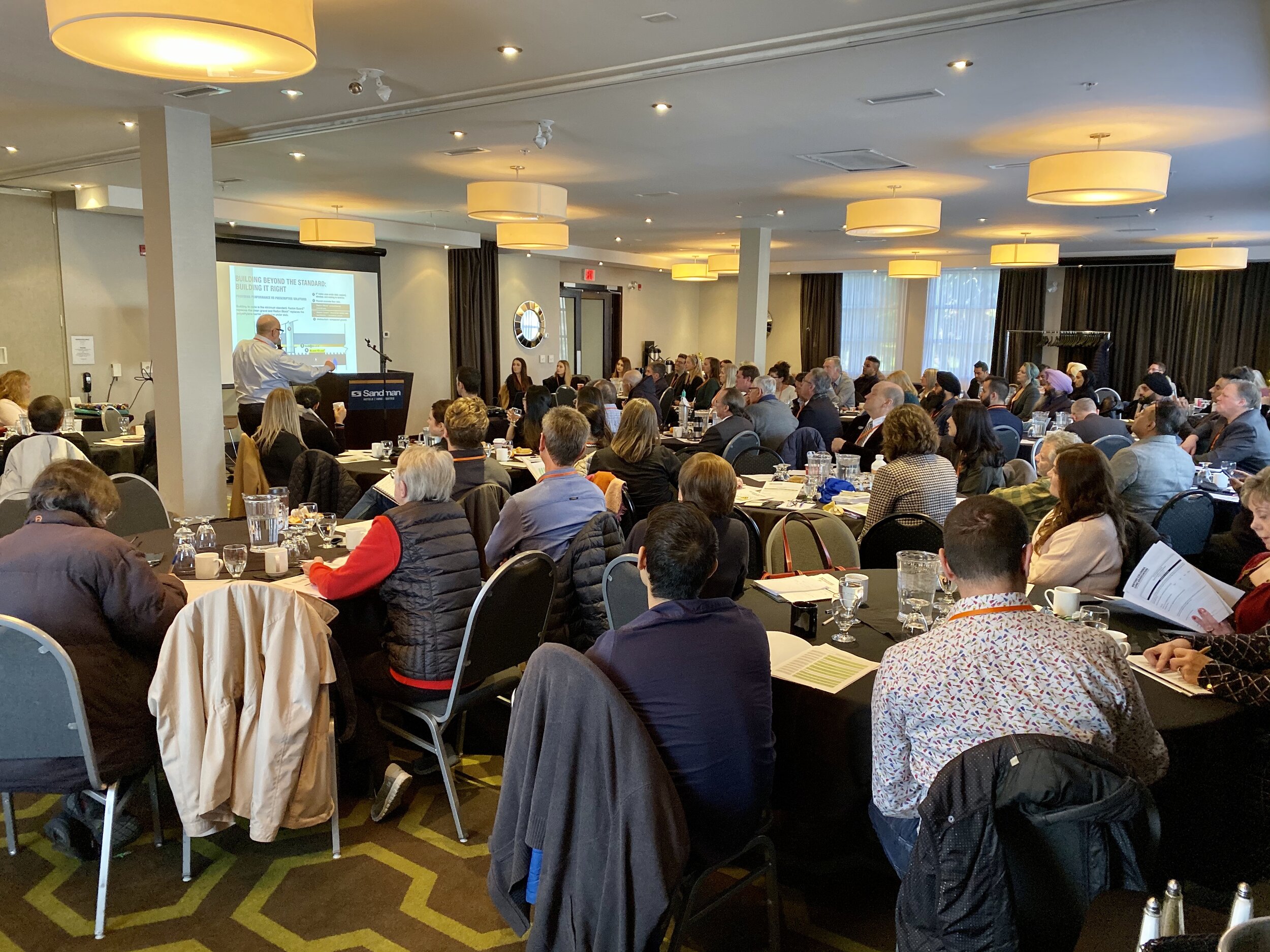FVRD lobbies the BC Government for Radon Mitigation Funding. Article by Mike Vanden Bosch (Fraser Valley Today)
CHILLIWACK — “Following the release of radon test analyses that showed elevated levels of radon in Electoral Area H (Cultus Lake and Lindell) and Hope, Fraser Valley Regional District staff support an effort to buy 200 radon kits and lobby the BC government for funding to help residents with radon mitigation systems in their homes.
According to a FVRD staff report prepared by environmental services coordinator Elias Ross, radon is a colourless, odourless gas that is linked to the deaths of more than 3,000 Canadians each year. Radon is reported to be the leading cause of lung cancer in non-smokers, according to the Canadian Cancer Society. Radon gets naturally released into the environment from decaying radioactive materials in the earth.”
Read Full Article By Mike Vanden Bosch (Fraser Valley Today)
Radon Mitigation for Builders
Radon Mitigation System in Home Building
Every house contains some radon. Moreover, radon concentrations vary geographically and change at different times of the year.
Radon is present in every indoor environment, so it’s vital that homeowners must have their homes tested. Because long-term exposure to radon gas is harmful and can even lead to lung cancer.
Check out the Radon Potential Map of Canada Any home can have dangerous radon levels, regardless of geography.
How Does Radon Get into Home
Radon can seep into a home through soil, windows, cracks in foundation walls and floors, loose pipes fittings and support posts, floor drains and sump pumps, wall, floor joists, and even through your water facets! Concrete is porous, and radon is a gas. Therefore, that means it can penetrate through even the tiniest holes in a house.
Radon Mitigation System for Builders
There are three levels of radon reduction systems that builders can install into new construction.
Level 1 is a Rough-In for Active Soil Depressurization for Radon Reduction
Level 2- Full Passive Vertical Radon Stack
Level 3- Full Active Soil Depressurization
Level 1 radon - reduction system
Level 1 is a Rough-In for Active Soil Depressurization for Radon Reduction. A radon-reduction system's entrance point for radon and other soil gasses is a pipe that extends into a soil gas collector (typically gravel) beneath the foundation floor. The pipe finally comes to an end and is covered just above the slab.
This system is merely a rough-in, and if radon mitigation is needed, a fan system can be added. In order to reduce radon ingress, a membrane has also been placed beneath the concrete slab and is sealed to the foundation wall. The majority of provinces and territories have followed this strategy, according to CARST.
Also, it is essential to caulk any foundation cracks and joints as well as the areas near the sump pit, floor drains, and other pipes.
Level 2 - Full Passive Vertical Radon Stack
Level 2 is an extension of Level 1, where the pipe from Level 1 is extended up through space vertically and out through a wall to terminate outdoors. Provisions must be taken to ensure the pipe is properly sealed to ensure re-entrainment of radon does not occur. The system relies on naturally occurring pressure differentials generated by the stack effect to mitigate radon. This level is now being used in the BC building code.
Level 3- Full Active Soil Depressurization
System Level 3 uses the pipe from Level 2 and also includes a low wattage radon fan. The system relies on the radon fan to induce a pressure difference to exhaust soil gasses and radon from under the slab. Radon fans run continuously, and a system pressure monitor is installed for the monitoring of the system. This method has been shown to be highly effective at reducing radon concentrations in a building.
Many different products are available that can be used in the installation process of a radon reduction system. Radon Guard and Radon Block are the best choices to prevent radon from the beginning.
Radon Mitigation System - RADON GUARD™
Radon Guard® Insulation is a key component of any radon mitigation system. This code compliant replacement for code required 100mm layer of granular material under slab, is a 2 in 1 system that both insulates and protects interior spaces from radon gas for generations.
Radon Mitigation System - RADON BLOCK™
Radon Block® is the leading high performance radon blocking barrier membrane. It resists gas and moisture migration into the building envelope, providing superior protection from toxic and harmful chemicals. Evaluated as a code alternative solution CCMC 14024-R.
Contact us to discuss your radon mitigation options. With the proper radon mitigation system, radon levels can be reduced by more than 80% .
How Radon Block and Radon Guard work in an Active Soil Depressurization method
Radon Mitigation for Your Home
All about Radon and Radon Mitigation System for Homeowners
What is radon?
Radon is a radioactive gas created from the decay of uranium minerals present in rock, soil and water. You cannot see, taste or smell radon. Outdoors there is little danger as radon is diluted in the open air. Indoors, radon can be trapped and become concentrated in enclosed poorly ventilated spaces resulting in a significant increased health risk.
Radon is the leading environmental cause of lung cancer and the second-leading cause of lung cancer next to smoking. Radon-induced lung cancer is preventable, Health Canada’s take action guideline is 200bq/m3. If your home tests above this take action guideline, a mitigation system should be installed.
Check out the Radon Potential Map of Canada.
What is Radon Mitigation?
RADON MITIGATION is the process used to reduce radon gas concentrations in the home or in a building.
What is a Radon Test?
The radon test is a test to identify the level of radon in your home. A radon test can be done by a professional home inspector or by yourself using a radon test kit or the radon tester. Testing radon can be a DIY project. Besides, there is also radon testing equipment for inspectors.
A radon test identifies the radon level in your home so you can make an informed decision and take action if necessary. You can purchase a long-term radon detector and test yourself or hire a certified radon professional to test for you.
Do I need to test for radon?
All homes have some amount of radon, the question is how much. Since you cannot see, taste or smell radon, scientific testing is needed for detection. Testing for radon is an important part of assessing your Indoor Air Quality and should be taken seriously to protect the health of everyone who enters your home. High levels of radon can lead to a significant risk of lung cancer.
Radon Mitigation in Well Water
Some radon stays in the water, drinking water containing radon also presents a risk of developing internal organ cancers, primarily stomach cancer. Radon is only a concern in your water if your drinking water comes from a well (groundwater). Water from wells can have high radon concentrations because radon is relatively insoluble in water.
Water use releases radon into the indoor air and contributes to the total indoor airborne radon concentrations. Radon can be off gassed in the shower, kitchen sink and through the laundry. Radon can be removed from our water using an aeration system, this can significantly reduce the level of radon in your water. The Airwell radon system lowers radon levels in well water up to 99%.
Solve the problem of radon in well water before water enters the home. Radon reductions up to 99%.
How does radon gas enter your home
1 . Soil
2. Windows
3. Cracks in walls & floors
4. Loose pipe fittings & support posts
5. Floor drains & sump pumps
6. Wall & floor joints
7. Ground water
REM Teams Up With SunRADON In North America
March 22, 2023, Radon Environmental Management Corp (REM) and SunRADON LLC are excited to announce a new strategic partnership, which will strengthen and expand their offering of high-performance Indoor Air Quality (IAQ) and radon measurement solutions, to prevent radon exposure and save lives.
"We are delighted to have entered into a Distribution Agreement with SunRADON, to exclusively supply the lüft® in Canada. We feel a total IAQ solution which includes radon is unique and brings value to the consumer and our commercial clients. We believe this will promote greater awareness of radon in Canada and will result in greater radon monitoring Canada-wide” said Alan Whitehead, REM President & CEO.
David Innes, REM Director of Sales, added "lüft from SunRADON is an established product in the United States and REM is very excited to bring it to the Canadian market. lüft is an IAQ monitor with Wi-Fi connectivity that provides detailed reports and feedback on radon, tVOC, eCO2, temperature, humidity, and air pressure. lüft is designed for both consumer and commercial applications and is meant for long term, continuous monitoring of these metrics for on-going piece of mind, of total IAQ. Its sleek and direct plug-in design, complete with Wi-Fi connectivity, makes it a great solution for monitoring homes, schools and workplaces and comes with a specialized non-tamper cover for these applications. lüft also can interconnect with hundreds of units, to continuously monitor large buildings easily on one dashboard and create total building reports.”
“We are thrilled to be working with REM to improve IAQ awareness across Canada. Radon is a silent killer but is completely manageable if detected and mitigated. We developed the lüft technology using our professional device technology, which has been in use and trusted by thousands of professional radon and building inspectors for over 35 years. We are excited to bring this proven and trusted technology to millions of Canadians who live and work in areas where radon is present” said Dr. Kai Wundke, SunRADON LLC CEO.
About REM
Radon Environmental is a building and environmental health sciences company focused on reducing public exposure to radon gas. REM provides innovative high-performance radon detection and mitigation solutions to treat radon in air and water. The company consults on radon education, mapping, testing and mitigation planning, with government organizations and the building and construction sector across North America. A strength of the company is its emphasis on strategic development to build strong partner and customer relationships.
For more information, visit radoncorp.com
About SunRADON
SunRADON provides market leading Radon Detection and Indoor Air Quality (IAQ) solutions. Its mission is to advance the innovation, accuracy, reliability and affordability of Radon and Indoor Air Quality Monitors, to aid in the avoidance of radon-induced lung cancer and the attainment of healthy indoor air quality. SunRADON developed the first professional radon monitor for building inspections in 1987, and through continuous technology and customer satisfaction leadership, is trusted by thousands of professional radon and home inspectors worldwide. Our professional solutions also include wireless data uploading, remote electronic radon laboratory services, and state regulatory compliant quality control and reporting software. Our line of consumer products includes lüft, which utilizes the same proven radon monitoring technology as our professional solutions, but for the consumer market. lüft features a unique plug-in design with Wi-Fi connectivity, to measure and report on radon and IAQ metrics including tVOC, eCO2, temperature, humidity, and air pressure.
For more information, visit sunradon.com
Article - More than half the state’s groundwater has a 50% or higher probability of radon levels above what’s considered safe.
A new study lead by the U.S Geological Survey using public data to map the presence of radon and uranium in New Hampshire has concluded approximately half the areas groundwater likely has radon levels considered to be unsafe.
Full Article , Jeongyoon Han, nhpr.org
Back To Vegas For IBS
January 5, 2023 - Connect with us at IBS! Our team will be making a short stop in Vegas at the end of January for the NAHB International Builders' Show®. We will be showcasing the Airwell™ by Radon Environmental, with radon reductions up to 99%, this innovative technology mitigates radon in well water before it enters the home.
Stop by to meet our team and see the aeration system in action at booth SU1555!
Radon Environmental & CR3 Partner To Raise Radon Awareness Through Animal Wellness
January 3, 2023 - The Bark Side of Radon, presented by Radon Environmental (REM), is a Canadian public awareness campaign promoting home-owner radon testing through pet health. Medical conditions that veterinarians see in animals are like those doctors see in patients, but the diseases often develop earlier in animals.
"The Company is pleased to announce that it is joining forces with Citizens for Radioactive Radon Reduction (CR3), in the United States, to expand the campaign to protect all our loved ones, from exposure to cancer causing radon gas, across North America" said Alan Whitehead, President & CEO of REM.
"Your pets are at the lowest level near the ground. Because of their silence, we can be less aware of their suffering until it's too late." says, Jackie Nixon, Cancer Survivor. "We found that the general public truly cares about their pets and really want the best for them. Talking to them about how radon affects animals and how they can protect their pets, really gets their attention and increases their willingness to consider testing for radon."
The oncologist said, “radon is a known cause of lung cancer”. When my husband, Joe, was diagnosed with lung cancer. A radon test revealed we had been living with over 4 times the EPA action level of this demon for 18 years and didn’t know it. We, like millions of others, didn’t know that radon exposure could cause lung cancer; and we didn’t know this silent killer was living with us." says Gloria Linnertz, CR3 President.
About REM
Radon Environmental is a building and environmental health sciences company focused on reducing public exposure to radon gas. REM provides innovative high-performance radon detection and mitigation solutions to treat radon in air and water. The company consults on radon education, mapping, testing and mitigation planning, with government organizations and the building and construction sector across North America. A strength of the company is its emphasis on strategic development to build strong partner and customer relationships.
Contact Radon Environmental:
Emma Whitehead , Customer Relations & Communications Manager
Email: ewhitehead@radoncorp.com
About CR3
Citizens for Radioactive Radon Reduction (CR3) promotes radon reduction to communities through education and awareness. By helping them to understand the risks of not testing and the effects of long-term exposure, CR3 broadens radon knowledge and the willingness of community members to test their properties for radon gas.
Contact CR3:
Jacquelyn E. Nixon, Director of Marketing & Communications
Radon Mitigation System for New Construction
If you are a builder looking for best practices for installing radon control measures in new builds, you’ve come to the right place.
The Radon Environmental team works with builders across North America to provide a fantastic radon-reduction solution for new construction. Our radon mitigation solutions go above building code standards. This means peace of mind for homeowners.
Radon Mitigation System for New Home
Measuring Radon
Radon is measured in becquerels, which is a unit used to measure radioactive concentration. The Canadian guideline for radon dictates that a home should not contain more than 200 Bq/m3 or 200 units of becquerels per cubic metre.
Any home can have dangerous radon levels, regardless of geography. Check out the Radon Potential Map of Canada to find your area.
When To Remove Radon From Your Home
Here is Health Canada’s time guideline for removing radon from your home:
in less than 1 year if the radon level is greater than 600 Bq/m³
in less than 2 years if the radon level is between 200 Bq/m³ and 600 Bq/m³
Radon Mitigation Systems
Radon Guard
Radon Guard is a structural sub-slab insulation panel that creates continuous ventilation below the slab, with a 68% void space and insulation value that provides excellent communication under the entire slab area.
Installation of Radon Guard in a new construction build with RDC Fine Homes.
The Radon Guard is a structural sub-slab insulation panel that creates continuous ventilation below the slab.
KEY FEATURES of Radon Guard:
code compliant replacement for a 100mm thick layer of clean granular fill as required by code
provides insulation for the slab, less heat loss during cold season than gravel
interconnected channels on underside of panel depressurize sub-slab space, direct radon to vent pipe
known compressive strength
available in five R-values: 8.1 (RSI 1.4 ), 10.1 (RSI 1.8), 12.1 (RSI 2.1), 14.1 (RSI 2.5), and 16.2 (RSI 2.9)
Radon Guard provides high insulation that leads to greater energy efficiency in home.
More information about Radon Guard here.
Radon Block
Radon Block is an engineered vapor barrier that blocks radon from diffusing into the home. It has the lowest radon diffusion coefficient or diffusivity of any of the membranes on the marketplace.
KEY FEATURES of Radon Block:
Radon Block™ is the new leading high performance radon blocking barrier membrane.
exceeds ASTM E-1745 Class A, B and C requirements
available in 20 mil (Class A) thicknesses designed to meet the most stringent requirements
produced within strict guidelines of an ISO 9001:2008 Certified Management System
evaluated as a code alternative solution CCMC 14024-R
available in 10’ x 150’ rolls to maximize coverage
rolls weigh 160 lbs and are folded on heavy-duty cores for ease in handling and installation
installation instructions and ASTM E-1745 classifications accompany each roll
By using Radon Guard and Radon Block together, an active soil depressurization system would be achieved, coupled with a 4” vent pipe from below the slab that exhausts outdoors. Place an order for our radon mitigation systems here.
Radostat (on-demand radon mitigation)
Coupled with an HRV, Radostat provides the most simple radon mitigation system that is highly beneficial for retrofit and new build scenarios alike. Energy savings of up 80% may be realized. Your Radostat will only operate only as needed. This means prioritizing energy efficiency along with indoor air quality.
Coupled with an HRV, Radostat provides the simplest radon mitigation system that is highly beneficial for retrofit and new build scenarios
This innovative approach to radon reduction and monitoring is suited to commercial and residential buildings.
Key Features of Radostat:
real-time continuous radon sensor
non-invasive design integrates into existing HRV/ERV
activates at a peak of 150 Bq/m3 (4.0 pCi/L)
economical operation activates only as needed
ETL listed 5009005: conforms to UL STD 61010-1, certified to CSA STD C22.2 No.61010-1
2 year warranty
At what level should you install a radon mitigation system?
The Canadian radon guideline is set at 200 Bq/m3 for indoor radon concentrations at which mitigation is recommended.
Learn about radon mitigation products being used across North America.
Related: What Are The Benefits of a Radon Mitigation System? by Mike Holmes.
Q & A SECTION about Radon and Radon Mitigation Systems:
Can you run a ceiling fan during a radon test?
No. During the test, turn off any air-moving equipment. Ceiling fans, dehumidifiers, conventional fans, HEPA filters, and any other air-moving filtering equipment fall into this category. During the test, only use fireplaces or heating stoves if they are your primary source of heat.
Do dehumidifiers remove radon?
No, buying a dehumidifier will not make radon go away.
Does rain affect radon testing?
In short, yes, radon concentrations are predicted to be slightly higher within your home on rainy days. The weather is one of the most important factors in radon levels. Weather changes, especially severe weather, can modify pressure differences and, as a result, the way radon enters your home. Radon levels in a home typically rise after specific weather events, such as storms. Strong winds, for example, can cause radon levels to rise or fall. Depending on the situation, weather events can cause your radon levels to rise or decline. Weather has a number of effects on your test, and it's impossible to forecast which ones.
Do open windows affect radon testing?
It's vital to remember that while testing for radon, the house must be completely closed up – that’s why is it best to test in the fall and winter months. The test will be invalid if any outside doors or windows are open.
Does opening doors reduce radon?
Opening windows to minimise radon levels isn't a viable long-term strategy. Open windows, can minimise radon in the short term, allowing you to stay in your home safely until you can build a permanent solution.
Can air purifiers reduce radon?
Air cleaners or purifiers are machines that filter or electrostatically remove particulates from the air, such as dust or radon decay products. Air cleaners are routinely used to condition indoor air for several health benefits and overall comfort in the home, and attempts have been made to market air cleaners to prevent radon decay. Mold, dust, allergies, germs and viruses, and odours are all things that air purifiers can help with, but there are manufacturers that claim they may also aid with poisons, gases, and compounds like radon. An activated carbon filter is the most effective form of air filter and, according to some research, can help in reducing radon levels. However, this technology has not been proven to help decrease the health concerns associated with radon. The EPA does not recommend using air cleaners to reduce radon decay products in indoor air at this time. Although air cleaners will remove some radon decay products, numerous issues remain about the relative health effects of the decay products that aren't removed and the possible impacts of the radon decay products' undiminished source. The EPA feels there is insufficient evidence to recommend the installation of air cleaners to lower the risk of exposure to radon and its decay products until additional data is available.
Are portable radon detectors accurate?
There are definitely several reliable portable radon detectors. If fact, Ecosense EcoCube and Radon Eye are in the top 10 Radon Detection Devices by Best Review Guide for 2022.
Can radon cause mental illness?
For many people, radon does not directly cause psychological disorders. However, the potential of radon in your home can cause anxiety and restless thoughts about the prospective health risks of living in a home with a high radon level. New research is being conducted every day, and there are university studies looking into linking Radon exposure to early on-set Alzheimer’s.
Do Ceiling fans reduce radon?
Ceiling fans do not reduce radon. In fact, if the blades on the fan are pulling air upwards it could actually increase the radon levels very slightly.
Does every house have radon?
Every home has some radon, although concentration levels differ from one home to the next, even if they are near to each other. The only way to know how much is to test for Radon.
Extra care must be taken to seal around the pipe where it penetrates the Radon Block engineered membrane.
What Radon Reduction System is the Best For You?
Active soil depressurization system using RN4EC4 Fan
There are many factors to consider when finding a radon mitigation system that is right for you. That’s why we advise that you consult with a radon mitigation specialist. They will test your home’s radon levels, address the size of your home and type of foundation, and take into consideration soil and weather characteristics, installation and system operation costs.
It's also important to consider the radon mitigation system effectiveness. For example, active suction systems reduce radon concentrations by 50% to 99%, while passive suction systems only lower concentration levels by 30% to 70%. A passive system, on the other hand, may be sufficient if your radon gas concentrations are on the low end of the scale. If radon levels rise, you can easily add a fan later.
Let’s review the factors you should consider when finding the best radon reduction system.
WHAT IS RADON GAS?
Radon is a naturally occurring radioactive gas that results from the breakdown of uranium in soil and rock. It is odourless, tasteless, and colourless. When radon is discharged into the air from the earth, it is diluted and is not a health hazard. It can, however, build up to dangerous amounts in enclosed environments such as dwellings.
WHERE DOES RADON GAS COME FROM IN A HOUSE?
Radon can enter a home through any fractures in foundation walls and floor slabs, construction joints, gaps around service pipes, support posts, window casements, floor drains, sumps, or cavities inside walls where the house is in contact with the ground.
How does radon gas enter your home
Soil
Windows
Cracks in walls & floors
Loose pipe fittings & support posts
Floor drains & sump pumps
Wall & floor joints
Ground water
RELATED: RADON TESTING: WHAT RADON TEST DO YOU NEED?
HOW DO RADON REDUCTION SYSTEMS WORK?
Mike Holmes with a fully installed mitigation system in a home.
Depending on which radon mitigation system you choose to install in your home, you can lower radon levels by up to 99 percent.
Radon in the air is reduced through ventilation, which can be gathered beneath a concrete floor slab or through a ground membrane, or by increasing the number of air changes per hour in the building. Radon can be removed from home water sources using aeration or activated charcoal treatment devices.
HOW TO SELECT THE BEST RADON REDUCTION SYSTEM?
Your contractor will evaluate numerous factors when choosing a radon reduction solution for your home, including:
Your home's radon level
Installation and system operation costs
The size of the house and the type of foundation
Soil characteristics and weather
The characteristics of your home determine the efficiency of any radon-reduction procedure by the amount of radon present, how it enters your home, and how effectively the work is done. While a single strategy may be effective, there are occasions when a combination of methods is required.
THE ONLY WAY TO KNOW IF YOU HAVE RADON IN YOUR HOME IS TO GET TESTED.
SPRAY FOAM INSULATION AND RADON
Spray foam alone is not a radon mitigation system and a radon fan and exhaust point are still required to constitute a complete mitigation system.
A tighter house will be more energy-efficient than a leaky house, allowing for higher radon gas concentrations. That's why it's crucial to retest for radon after a home has been air-sealed or new insulation has been installed. Spray foam insulation prevents radon from entering your basement by sealing gaps and cracks in the walls. Thus, decreasing the amount of radon entering your home will create healthier indoor air quality and help regulate the temperature in your home. Spray foam forms a continuous air barrier that protects against radon and other gases as the first line of protection. Spray foam also acts as a vapour barrier, protecting the foundation. However, spray foam alone is not a radon mitigation system and a radon fan and exhaust point are still required to constitute a complete mitigation system.
RADON AND VENTILATION
Installing a heat recovery ventilator system (HRV) is by far the most straightforward option for radon reduction. An HRV can be used in both new and existing homes, and it exhausts the radon-containing old air and replaces it with fresh outdoor air. HRVs provide a consistent level of airflow throughout the year if properly balanced and maintained and can also help to enhance the indoor air quality in homes with additional contaminants.
Coupled with an HRV, Radostat provides the simplest radon mitigation system that is highly beneficial for retrofit and new build scenarios
The NRC in Ottawa has published data relating to the effectiveness of the HRV as a radon mitigation tool. It is important to balance the HRV slightly positive, when using it as a radon mitigation system as the positive pressure helps stop the ingress of Radon into the home.
The Fantech Fresh Air Appliance can ventilate your entire home with fresh outdoor air up to 20 times per day while recovering 80% of the energy. The building codes in Alberta, British Columbia, Saskatchewan, Manitoba, New Brunswick, the Yukon, Nova Scotia, and some sections of Prince Edward Island all mandate radon rough-ins and it’s important to note that all new builds in Ontario require HRV installations.
Tip: You can add a device called a Radostat from Radon Environmental that will measure your Radon levels and pilot the HRV to run when Radon levels are high.
HOW Fantech’s Fresh Air Appliance WORKS
Clean outdoor air is drawn into the unit. The fresh air is warmed and distributed throughout the house. Stale, musty, humid, and impure air is extracted from the home and used to warm up the cold incoming air. The unhealthy warm air is then expelled to the outdoors. An innovative counterflow core exchanges energy while keeping airflow separate to avoid contamination.
LEAKAGE OF RADON
Sealing any openings in your home where radon could enter could help lower your radon levels. However, it is not a stand-alone strategy for reducing radon levels because it is difficult to find, access, and securely seal all openings.
Other openings your radon mitigation professional will look at are:
Open Sumps: An airtight cover can be added to sumps. If the sump also serves as a floor drain, a unique trap should be added to the airtight cover, which should be slightly recessed into the sump.
Floor Drains: Special traps can be built in basement floor drains to allow water to drain while preventing radon from entering the basement. Molds, odours, insects, and cold draughts are all kept out by using these traps.
Floor Wall Joint: The seam between the foundation wall and the basement floor can be sealed if it is accessible. This joint can play a significant role in radon levels in a home.
Exposed Soils: A plastic membrane with sealed edges and seams can be used to cover exposed earth in crawl spaces. After a membrane has been built, concrete can be poured to cover any exposed soil in a basement that does not have a floor slab (e.g., a cold storage room).
Voids in Concrete Block Walls: Seal cavities in the top of the foundation and inner load-bearing walls if there isn't a solid row of block.
After shutting main openings, minor entry routes that are visible or accessible can occasionally be sealed to further reduce radon levels. Minor foundation cracks in the walls and flooring can be repaired. Larger cracks necessitate unique techniques; consult a contractor or a construction material supplier. The gap around utility penetrations in walls and floors (e.g., water, sewer, electricity, natural gas, fuel oil) can also be sealed using low expansion spray foam.
Drainage (Depressurization of the Drainage System)
Water drainage systems inside a home can provide an easy pathway for radon to enter your home. However, when the sump pit is covered with a sealed lid and connected to a venting pipe, the amount of radon entering your home can effectively be reduced. You can also connect a radon mitigation system to it if you have an exterior drain located outside next to your foundation. The radon is drawn from the soil and through the sump to an outdoor exhaust point above the home's roof by a radon fan linked to the vent pipe.
Warranty
Your radon mitigation system will typically come with a lifetime warranty when installed by a licensed provider, but it is always advised to be aware of the warranty upfront. The fan, however, is not covered by the system guarantee and a typical manufacturer warranty is 5-years, while other fans may have a shorter or longer warranty period. It's always best to work with your licensed provider and understand the maintenance and warranties associated with your specific system.
One of the biggest radon fan manufacturers is Fantech, and the Fantech RN2 Radon Fan is one of the top 5 radon fans on the market.
TYPES OF RADON REDUCTION SYSTEM
Exterior Installed Radon Mitigation Systems
These are active soil depressurization systems that use a radon vent fan. These systems are made up of various parts: The radon suction pipes are placed in the basement or crawlspace and enter the earth beneath.
The exterior Radon Mitigation systems seen in the USA where the code is to have the pipe external to the house. In Canada, by contrast, the fan is installed in the house. The Fantech line of Fans meet both specifications. It is important that if you pass the pipe through the attic in unconditioned air that you insulate the Radon pipe as the air passing through it is very humid and the pipe can freeze in winter months.
Attic Installed Radon Mitigation Systems
The radon suction pipes are placed in the basement or crawlspace and enter the earth beneath. Radon gas and other soil gases from the ground are sucked into the suction pipes. The suction pipe continued up the foundation wall and into the garage, penetrating the rim joist.
Passive Radon Mitigation Systems
A passive radon system is a radon system without a radon exhaust fan. A passive system typically runs from the basement sump crock or drain tile and exhausts through the roof without using an active radon exhaust fan.
Passive radon systems rely on a phenomenon known as the "stack effect." To carry air and radon gas through the pipe from the basement to the exhaust vent, the stack effect relies on air pressure differentials. When there is a difference in indoor and outside air density due to temperature and moisture fluctuations, air buoyancy occurs.
The stack effect is usually insufficient to considerably lower radon levels in a passive radon system because new dwellings are typically airtight to accommodate energy efficiency.
Radon Mitigation for A Crawlspace
Extra care must be taken to seal around the pipe where it penetrates the Radon Block engineered membrane.
A radon mitigation system will comprise a long-lasting air and moisture barrier that will completely cover the dirt floor of the crawl space. Radon gas can be mitigated by encapsulating the crawl area. To make this procedure work, extra care must be taken to seal around the pipe where it penetrates the plastic sheet. When using this method, it is important to select the right membrane. We recommend Radon Block which is an engineered 20 mil membrane that has a very low radon diffusion coefficient and is very durable.
RADON REDUCTION SYSTEM IN NEW CONSTRUCTION
At a minimum, builders should have some rough-in that includes: a layer of clean gravel or aggregate beneath the slab or flooring system, covered by polyethylene sheeting, a gas-tight venting pipe from the gravel level through to the outside of the building or roof, and sealing and caulking all gaps and cracks in the foundation are all essential requirements.
Installation of Radon Guard in a new construction build with RDC Fine Homes.
An alternative to the clear gravel is Radon Guard, a structural sub slab insulation panel that will add R value below your slab and at the same time creates a 68% void space from which to vent Radon and soil gasses as well as drain the water. It is code approved to replace the clear gravel layer in both Canada and the USA.
Level 2 is a complete passive radon reduction system that employs a vertically stacked stack that exhausts above the roofline. Due to the stack effect, the technology reduces indoor radon levels sporadically and does not require electricity. Radon levels are typically reduced by 50% with a Level 2 system.
Radon Block™ is the new leading high performance radon blocking barrier membrane.
RELATED: RADON MITIGATION: HAVE YOU CONSIDERED A RADON REDUCTION SYSTEM IN A NEW HOME?
Health Effects of Radon
Signs of Radon Poisoning
Radon is a silent killer. According to the Lung Association of Canada, radon is the second biggest cause of lung cancer in non-smokers. While radon decays, radioactive particles develop, which can become trapped in your lung tissue as you breathe. The energy released by radon particles can harm the cells in your lungs. Lung cancer can develop when the cells in your lungs become damaged.
You are at an even higher risk of lung cancer if you smoke and reside in a home with a high level of radon.
Common Symptoms:
Shortness of breath.
A persistent cough.
Tightness or pain in the chest.
Hoarseness.
Trouble swallowing.
How Long Does It Take for Radon Gas to Affect You?
Radon is a gas that enters the body as small particles. When these particles penetrate the lungs, alpha radiation is released, harming lung cells and leading to lung cancer. Unfortunately, radon poisoning has no treatment. The effects of the radiation are irreversible.
Lung cancer takes at least five years to develop when a particle destroys a cell and causes it to become malignant, but it commonly takes 15 to 25 years or even more. Only a few people who are exposed to radon develop lung cancer, but the more you are exposed to it, the more likely you are to develop lung cancer.
Where is Radon Most Commonly Found?
Radon exposure occurs in every building. The only way to know how much you have is to test for it. After entering buildings through cracks and other openings in the foundation, radon gas becomes trapped inside. Indoor radon can be regulated and managed using tried-and-true methods.
The highest levels of radon are typically found in the basement or first floor, and levels can vary from house to house, even homes side-by-side!
Radon Inspection by Professionals
A radon test determines the amount of radon present in your home. There are two types of testing: a do-it-yourself radon test kit or a test performed by a C-NRPP professional house inspector or radon specialist.
Mike Holmes Inspections inspectors are fully trained professionals certified by the Canadian National Radon Proficiency Program (Canadian-NRPP). C-NRPP professional house inspectors or radon specialists are specially trained to provide you with expertise and knowledge to help homeowners and building owners measure and reduce their radon levels.
How to Reduce Radon in Indoor Settings?
To minimize radon, most people utilize a system that includes a vent pipe(s) and a fan(s). These "sub-slab depressurization" solutions don't necessitate any considerable housing modifications. Crawl space dwellings can also benefit from similar solutions. These systems keep radon gas from the house by trapping it beneath the concrete floor and outside the foundation. Radon mitigation contractors use other radon reduction methods that may work in your house. The best system is determined by your home's design and other considerations.
RELATED: MITIGATE RADON: HOW TO MITIGATE RADON IN YOUR HOME IN 100 DAYS OR LESS.
As you can see, there are numerous factors to consider as well as a variety of radon mitigation system solutions, some of which work in tandem with one or more methods. Find a certified mitigator by contacting the Canadian National Radon Proficiency Program (C-NRPP) at 1-855-722-6777 or info@c-nrpp.ca, or the Canadian Association of Radon Scientists and Technologists (CARST) at info@carst.ca, or Health Canada at hc.radon.sc.canada.ca. Protect yourself and your family by having your home tested and installing a radon mitigation system to reduce the dangers of radon gas.
Q & A SECTION:
Can you run a ceiling fan during a radon test?
No. During the test, turn off any air-moving equipment. Ceiling fans, dehumidifiers, conventional fans, HEPA filters, and any other air-moving filtering equipment fall into this category. During the test, only use fireplaces or heating stoves if they are your primary source of heat.
Do dehumidifiers remove radon?
No, buying a dehumidifier will not make radon go away.
Does rain affect radon testing?
In short, yes, radon concentrations are predicted to be slightly higher within your home on rainy days. The weather is one of the most important factors in radon levels. Weather changes, especially severe weather, can modify pressure differences and, as a result, the way radon enters your home. Radon levels in a home typically rise after specific weather events, such as storms. Strong winds, for example, can cause radon levels to rise or fall. Depending on the situation, weather events can cause your radon levels to rise or decline. Weather has a number of effects on your test, and it's impossible to forecast which ones.
Do open windows affect radon testing?
It's vital to remember that while testing for radon, the house must be completely closed up – that’s why is it best to test in the fall and winter months. The test will be invalid if any outside doors or windows are open.
Does opening doors reduce radon?
Opening windows to minimise radon levels isn't a viable long-term strategy. Open windows, can minimise radon in the short term, allowing you to stay in your home safely until you can build a permanent solution.
Can air purifiers reduce radon?
Air cleaners or purifiers are machines that filter or electrostatically remove particulates from the air, such as dust or radon decay products. Air cleaners are routinely used to condition indoor air for several health benefits and overall comfort in the home, and attempts have been made to market air cleaners to prevent radon decay. Mold, dust, allergies, germs and viruses, and odours are all things that air purifiers can help with, but there are manufacturers that claim they may also aid with poisons, gases, and compounds like radon. An activated carbon filter is the most effective form of air filter and, according to some research, can help in reducing radon levels. However, this technology has not been proven to help decrease the health concerns associated with radon. The EPA does not recommend using air cleaners to reduce radon decay products in indoor air at this time. Although air cleaners will remove some radon decay products, numerous issues remain about the relative health effects of the decay products that aren't removed and the possible impacts of the radon decay products' undiminished source. The EPA feels there is insufficient evidence to recommend the installation of air cleaners to lower the risk of exposure to radon and its decay products until additional data is available.
Are portable radon detectors accurate?
There are definitely several reliable portable radon detectors. If fact, Ecosense EcoCube and Radon Eye are in the top 10 Radon Detection Devices by Best Review Guide for 2022.
Can radon cause mental illness?
For many people, radon does not directly cause psychological disorders. However, the potential of radon in your home can cause anxiety and restless thoughts about the prospective health risks of living in a home with a high radon level. New research is being conducted every day, and there are university studies looking into linking Radon exposure to early on-set Alzheimer’s.
Do Ceiling fans reduce radon?
Ceiling fans do not reduce radon. In fact, if the blades on the fan are pulling air upwards it could actually increase the radon levels very slightly.
Does every house have radon?
Every home has some radon, although concentration levels differ from one home to the next, even if they are near to each other. The only way to know how much is to test for Radon.
REM Acquires Stake in Airwell Technologies
January 6, 2020, (Vancouver, BC) - Radon Environmental Management Corp. (REM) is excited to announce a new strategic investment that will strengthen and expand the Company’s offering of high performance radon mitigation solutions, to reduce exposure to radon in the air we breathe and water we drink, which will save lives.
Radon is soluble in groundwater and is released as a gas into the indoor environment when well water becomes aerated as it enters a home or building. Exposure to radon gas is the leading cause of lung cancer in non-smokers and is also linked to stomach and other deadly cancers. There are an estimated 15 million groundwater wells in the United States, where stringent EPA and state radon in water standards apply. In Canada, 26% of the population is reliant on well water and in many high radon prone provinces, like Saskatchewan, 45% of the population receive their water from wells. Everyone on a groundwater well should test their water and indoor air quality for radon.
Alan Whitehead, President & CEO of REM said, "We are delighted to have significantly strengthened our partnership with Rob and Jamie MacKinnon, founders of Airwell Technologies, the holding company of the Airwell intellectual property and sales/manufacturing rights. Our equity investment in the Airwell continues our leadership role and commitment to providing the highest performance, cost-efficient, radon mitigation solutions. Under our Shareholders Agreement with Airwell Technologies, REM will distribute the Airwell globally and I look forward to joining Rob and Jamie on the Airwell Technologies Board of Directors.”
Rob and Jamie MacKinnon, Co-Founders and Directors of Airwell Technologies said “We are excited to have partnered with REM. We have been in the water well business for over 25 years and have extensive knowledge and experience with Pressure Systems and water treatment. This partnership brings us to the forefront of radon well water mitigation. By combining REM’s vast knowledge in all things radon and our long-standing experience with well water, it will truly benefit our customers. Under our Shareholders Agreement, the Airwell will continue to be manufactured exclusively by In-Well Manufacturing Corporation in Pembroke, Ontario. In-Well Manufacturing Corporation is wholly owned by the MacKinnon’s.”
About REM
Radon Environmental is a building and environmental health sciences company focused on reducing public exposure to radon gas. REM provides innovative high-performance radon detection and mitigation solutions to treat radon in air and water. The Company consults on radon education, mapping, testing and mitigation planning, with government organizations and the building and construction sector across North America. A strength of the company is its emphasis on strategic development to build strong partner and customer relationships.
About Airwell
Airwell is a new patented technology, it is a highly efficient, low voltage, low maintenance mitigation system, for removing radon in well water. It is the only system on the market that mitigates the radon outside the home, in the well. The Airwell’s patented aeration system reduces radon levels by 92-99% and will also mitigate methane, sulphur and iron levels present in groundwater wells.
David Innes (center), Director of Sales at REM with Jamie MacKinnon (left) and Rob MacKinnon (right), Directors, Airwell Technologies at NGWA’s Groundwater Week in Las Vegas in December 2019.
For further information, please contact:
David Innes, Director of Sales
Radon Environmental
Tel: (778) 327 4717 office, (888) 527-4717 toll free
Email: david.innes@radoncorp.com | Web: www.radoncorp.com
Spreading Radon Awareness
Radon Action Month wrapped up last week with a week of Radon Education workshops.
Radon Environmental hosted two Radon Education Seminars in Regina and Saskatoon, as part of the “Tackle Radon” initiative, launched in conjunction with the Saskatchewan Lung Association to raise radon awareness and encourage testing in Saskatchewan and Manitoba. Andrew Greene, Tackle Radon Ambassador and former Saskatchewan Roughrider, even stopped in at the Regina workshop. A lucky attendee in both Regina and Saskatoon was drawn to win in a limited edition football autographed by Andrew and Adam Bighill, Winnipeg Bluebomber and Grey Cup Champion!
The week ended with the 8th Annual B.C. Radon Workshop in Abbotsford, BC hosted by the BC Lung Foundation. This year’s workshop had a record attendance of over 100 attendees, including many local realtors! The session was divided in the afternoon with a special session for realtors led by Dr. Noah Quastel from Simon Fraser University/British Columbia Lung Foundation. Workshop presenters included representatives from Health Canada, BC Centre for Disease Control, CAREX, C-NRPP, CARST, Interior Health, Fraser Valley Regional District, SFU, North Vancouver City Library and Radon Environmental. For the full program, visit: https://bclung.ca/health-professionals/annual-radon-workshop.
REM Teams Up with Pylon and Wescan to Provide Radon in Water Testing Services Across Canada
November 27, 2019 - Radon Environmental Management Corp. (REM) Pylon Electronics and Wescan (a Pylon Company) are excited to announce a new partnership to provide laboratory services to test radon in water across Canada. Radon is soluble in groundwater and can be found in high concentrations in areas where the geologic radon potential is known to be elevated. When the well water enters the home, the radon will off-gas through aeration when showers, faucets and toilets are run.
"We are delighted to have teamed up with Pylon and Wescan to provide this important service to the public. If you are on a well and your indoor air radon levels are high, the well could be a significant contributing factor. Inhalation of radon gas is the leading cause of lung cancer in non-smokers and ingestion of radon has also been linked to stomach and other cancers. To reduce radon-induced cancer risk, it is important to have well water tested for radon to save lives," said Alan Whitehead, President & CEO of REM.
“We have been working with Radon Environmental for many years and we are excited to expand these testing services to the West coast” said Jim Mullins, Vice President of Pylon Electronics Inc. “The Wescan team is looking forward to contributing to this important activity of helping the public understand Radon risk factors in their respective living environments.”
About REM
Radon Environmental is a building and environmental health sciences company focused on reducing public exposure to radon gas. REM provides innovative high-performance radon detection and mitigation solutions to treat radon in air and water. The company consults on radon education, mapping, testing and mitigation planning with government organizations and the building and construction sector across North America. A strength of the company is its emphasis on strategic development to build strong partner and customer relationships.
About Pylon
Pylon is the largest independent and Canadian-owned service provider of test equipment calibration and repair services in Canada. We provide quality calibration services with accreditation to ISO/IEC 17025, active participation in the calibration community and commitment to customer satisfaction.
For more information, please visit: www.pylonelectronics.com
Pylon’s Instrument Division is an industry leader in the design and manufacture of precision radon measurement and detection instruments sold worldwide. Pylon also offers traceable calibration services using our radon and thoron chambers for many radon detection devices from a variety of OEM’s.
For more information, please visit: www.pylonelectronics-radon.com
About Wescan
Wescan brings a long history of accreditation to ISO/IEC 17025 of its calibration capabilities with broad measurement and metrology solutions to aerospace and aviation, analytical laboratories, automotive, bio-pharmaceutical, energy, health services and sciences, machining and manufacturing, oil and gas, research and development, testing and other industries. With the recent acquisition of Wescan by Pylon, operations have been expanded to include the Radon in water testing.
For more information, please visit: https://www.wescancal.com/
For further information, please contact:
David Innes, Director of Sales
Radon Environmental
Tel: (778) 327 4717 office, (888) 527-4717 toll free
Email: info@radoncorp.com | Web: www.radoncorp.com
Charles Larocque, Nuclear Lab Specialist
Pylon Electronics
Tel: 613-226-7920 ext. 241
Email: clarocque@pylonelectronics.com | Web: https://pylonelectronics-radon.com/
Roberta Polukoshko, Business Development Manager
Wescan Calibration
Tel: (604)275-0600
Email: info@wescancal.com | Web: https://www.wescancal.com
